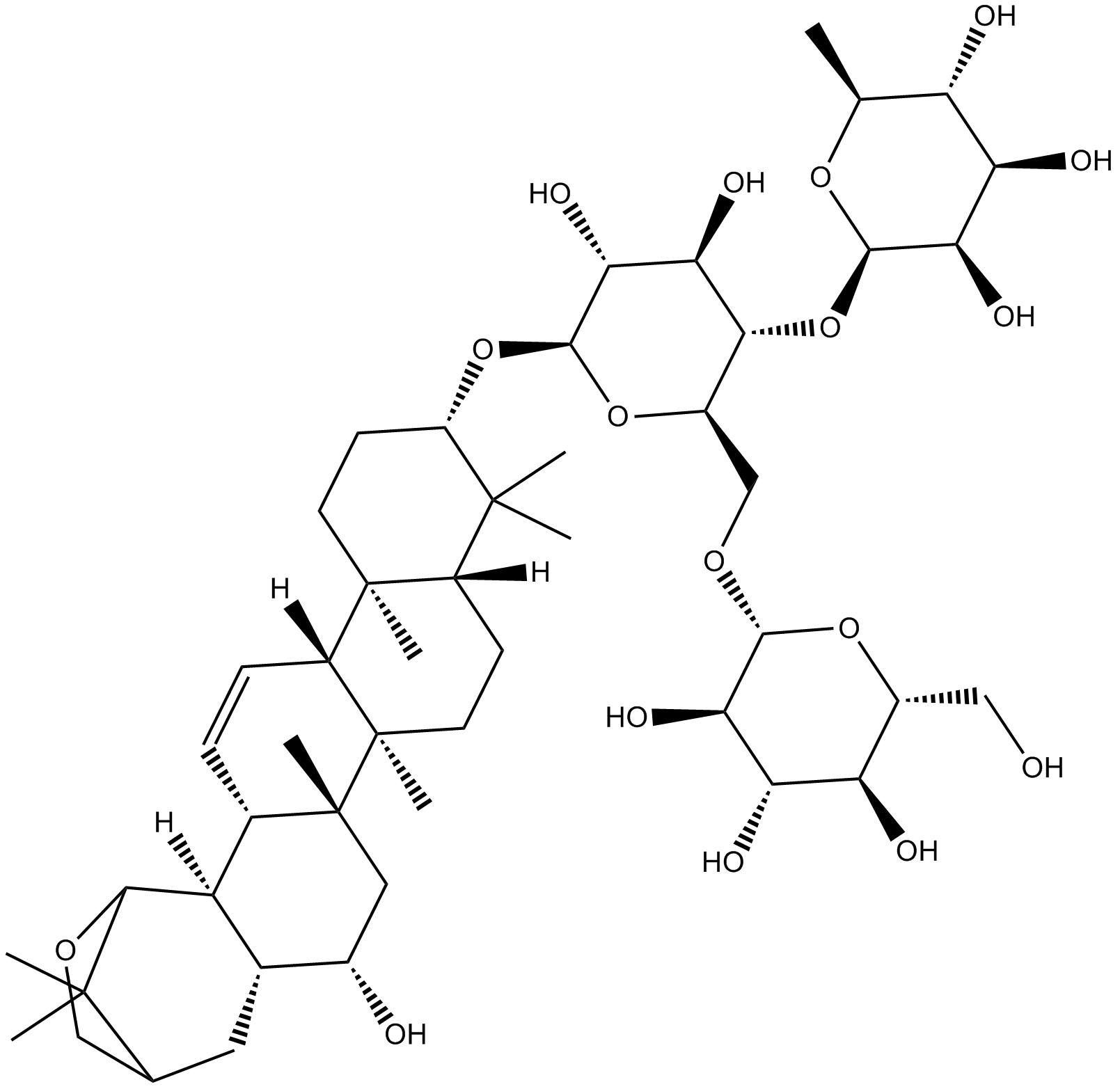Amyloid β
Amyloid β denotes peptides of 36–43 amino acids result from the APP (amyloid precursor protein) and are involved in Alzheimer's disease as the main component of the amyloid plaques.
Products for Amyloid β
- Cat.No. Product Name Information
-
GC63273
β-Amyloid (1-14),mouse,rat
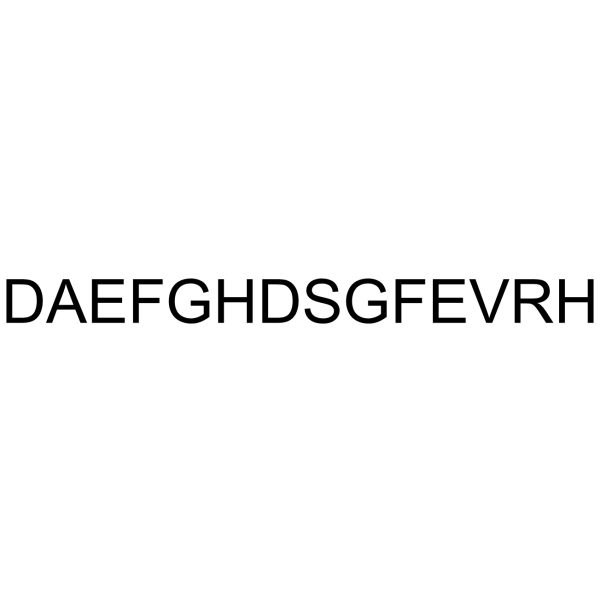
-
GC66089
β-Amyloid (1-40) (TFA)
β-Amyloid (1-40) TFA is a primary protein in plaques found in the brains of patients with Alzheimer's disease.

-
GC70182
β-Amyloid (1-40), FAM-labeled TFA
Beta-amyloid (1-40), FAM-labeled TFA is a FAM fluorescently labeled beta-amyloid (1-40) peptide (Λex= 492 nm and Λem= 518 nm).

-
GC63274
β-Amyloid (1-42), (rat/mouse) (TFA)
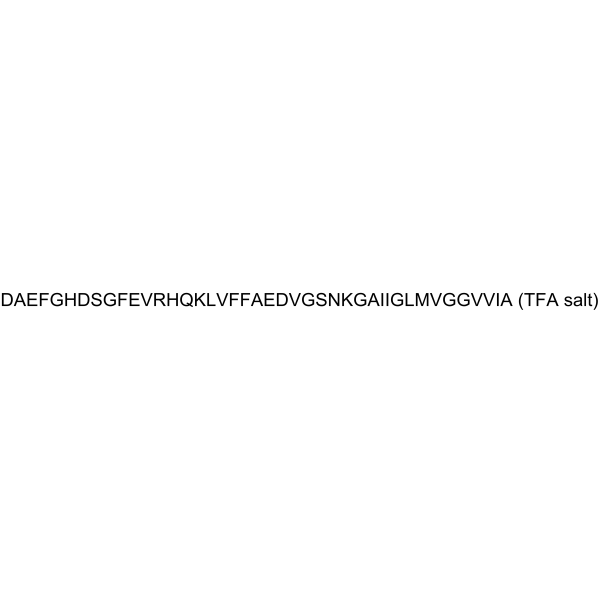
-
GC37984
β-Amyloid (1-42), rat
β-Amyloid (1-42), rat is a 42-aa peptide, shows cytotoxic effect on acute hippocampal slices, and used in the research of Alzheimer's disease.
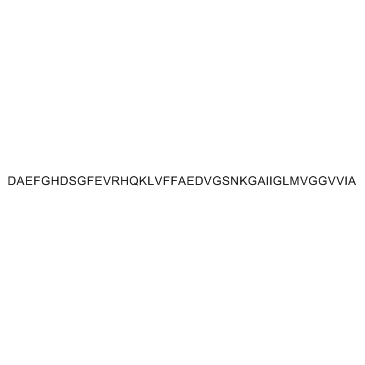
-
GC66416
β-Amyloid (22-35) (TFA)
β-Amyloid 22-35 (Amyloid β-Protein 22-35) TFA, the residues 22-35 fragment ofβ-amyloid protein, has a cytotoxic effect on cultured neurons from the rat hippocampus in serum-free medium. β-Amyloid 22-35 TFA forms aggregates and typical amyloid fibrils resembling those of the β-amyloid protein in neutral buffer solution).
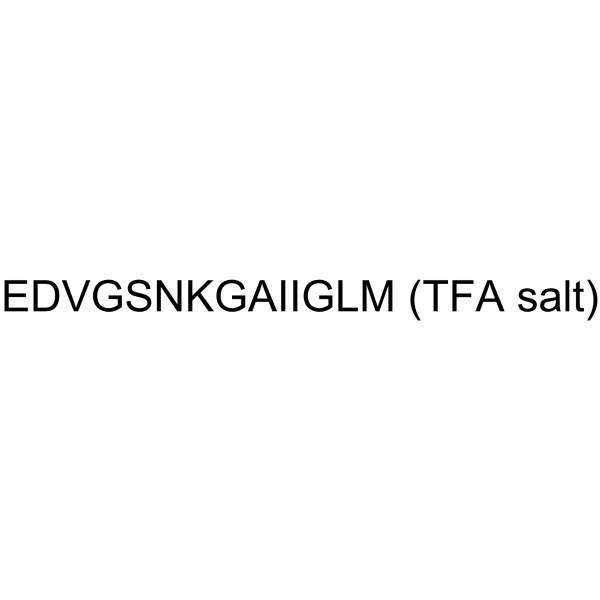
-
GC66346
β-Amyloid (42-1), human TFA
β-Amyloid (42-1), human TFA is the inactive form of Amyloid β Peptide (1-42). β-Amyloid (42-1), human TFA is a 42-amino acid peptide which plays a key role in the pathogenesis of Alzheimer disease.
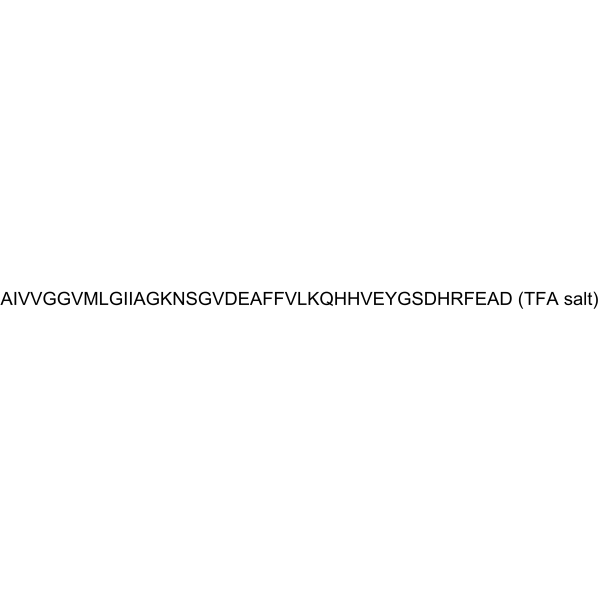
-
GC37986
β-Amyloid 1-17
β-Amyloid 1-17 is a peptide of β-Amyloid, stabilizes the fibres and plays a role in Aβ fibre formation.
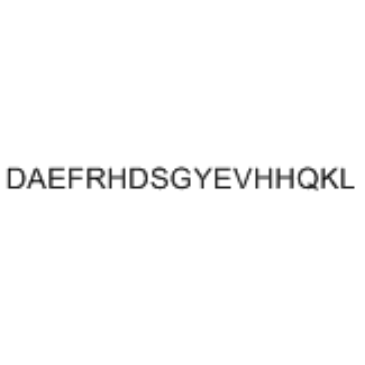
-
GC37987
β-Amyloid 1-20
β-Amyloid 1-20 consists of amino acids 1 to 20 of beta amyloid protein.

-
GC37993
β-Amyloid 1-9
β-Amyloid 1-9, an N-terminal fragment of beta amyloid, consists of amino acid residues 1 to 9.
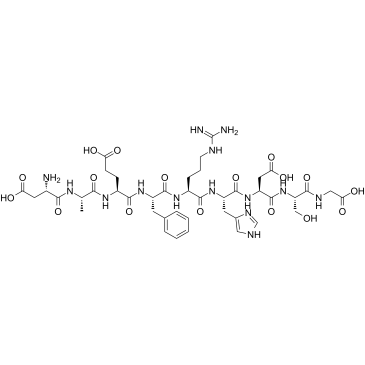
-
GC37985
β-Amyloid 11-22
β-Amyloid 11-22 is a peptide fragment of β-Amyloid.
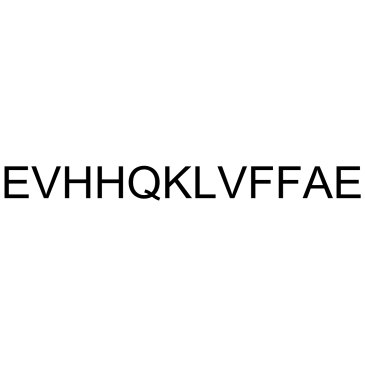
-
GC37988
β-Amyloid 12-20
β-Amyloid 12-20 is a peptide fragment of β-Amyloid.
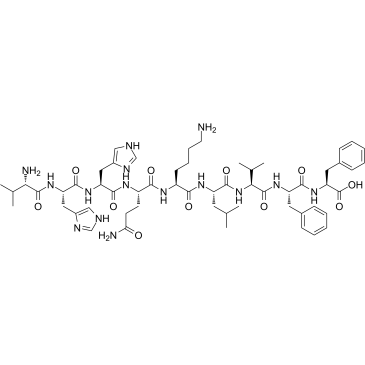
-
GC37991
β-Amyloid 15-21
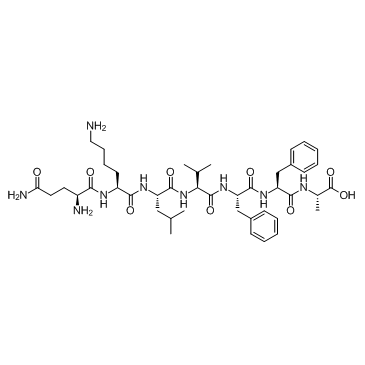
-
GC37992
β-Amyloid 18-28
β-Amyloid 18-28 is a peptide fragment of β-Amyloid.
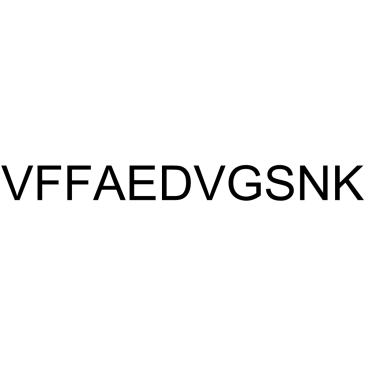
-
GC37994
β-Amyloid 22-40
β-Amyloid 22-40 is a peptide fragment of β-Amyloid.
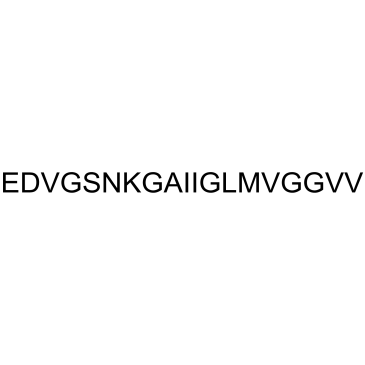
-
GC37995
β-Amyloid 33-40
β-Amyloid 33-40 is a peptide consisting of amino acid of 33 to 40 of beta amyloid protein.

-
GC37996
β-Amyloid 35-42
β-Amyloid 35-42 is a peptide consisting of amino acid of 35 to 42 of beta amyloid protein.
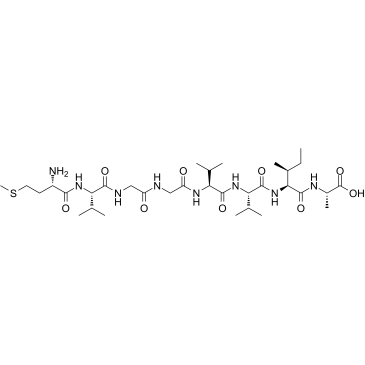
-
GC37997
β-Amyloid 4-10
β-Amyloid 4-10 is an epitope for the polyclonal anti-Aβ(1-42) antibody, reduces amyloid deposition in a transgenic Alzheimer disease mouse model.
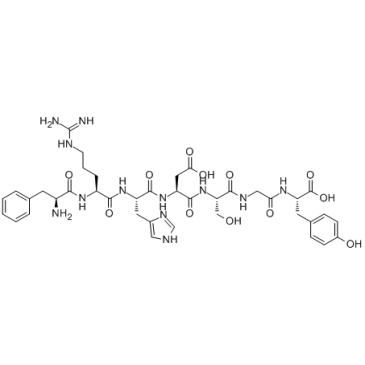
-
GC34242
β-Amyloid (1-42), rat TFA
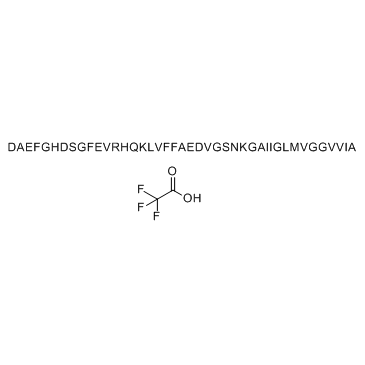
-
GC31146
β-Amyloid (10-35), amide
β-Amyloid (10-35), amide is composed of 26 aa (10-35 residues of the Aβ peptide) and is the primary component of the amyloid plaques of Alzheimer's disease.
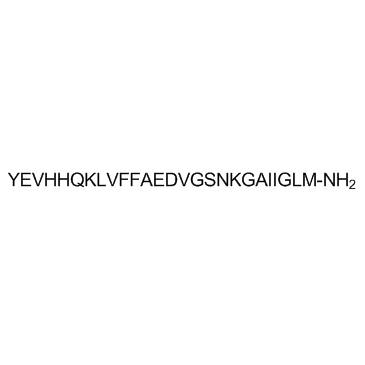
-
GC31129
β-Amyloid 1-16 (Amyloid β-Protein (1-16))
β-Amyloid 1-16 (Amyloid β-Protein (1-16)) is a β-Amyloid protein fragment involved in metal binding.
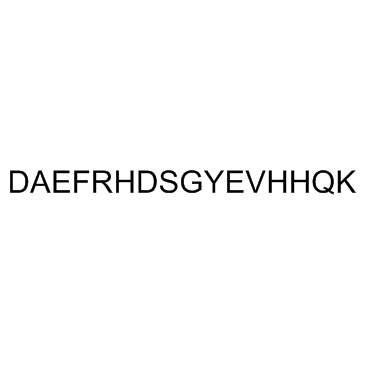
-
GC31171
β-Amyloid 1-28 (Amyloid β-Protein (1-28))
β-Amyloid 1-28 (Amyloid β-Protein (1-28)) is a β-Amyloid protein fragment involved in metal binding.
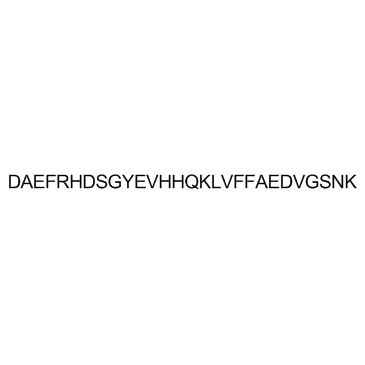
-
GC30325
β-Amyloid 22-35 (Amyloid β-Protein (22-35))
β-Amyloid 22-35 (Amyloid β-Protein 22-35), the residues 22-35 fragment ofβ-amyloid protein, has a cytotoxic effect on cultured neurons from the rat hippocampus in serum-free medium.
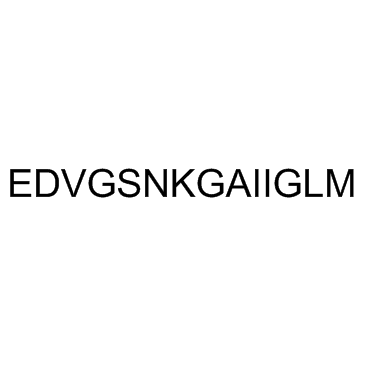
-
GC31137
β-Amyloid 29-40 (Amyloid beta-protein(29-40))
β-Amyloid 29-40 (Amyloid beta-protein(29-40)) is a fragment of Amyloid-β peptide.

-
GC31179
β-Amyloid 31-35
β-Amyloid 31-35 is the shortest sequence of native Amyloid-β peptide that retains neurotoxic activity.
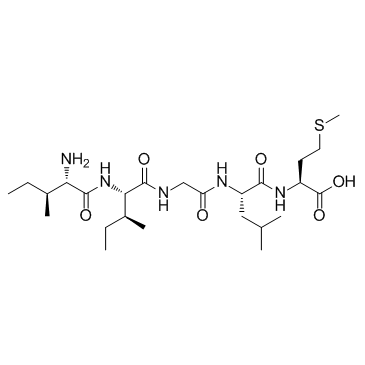
-
GC16032
(R,S)-Anatabine
Aβ inhibitor

-
GC16139
(R,S)-Anatabine (tartrate)
Aβ inhibitor
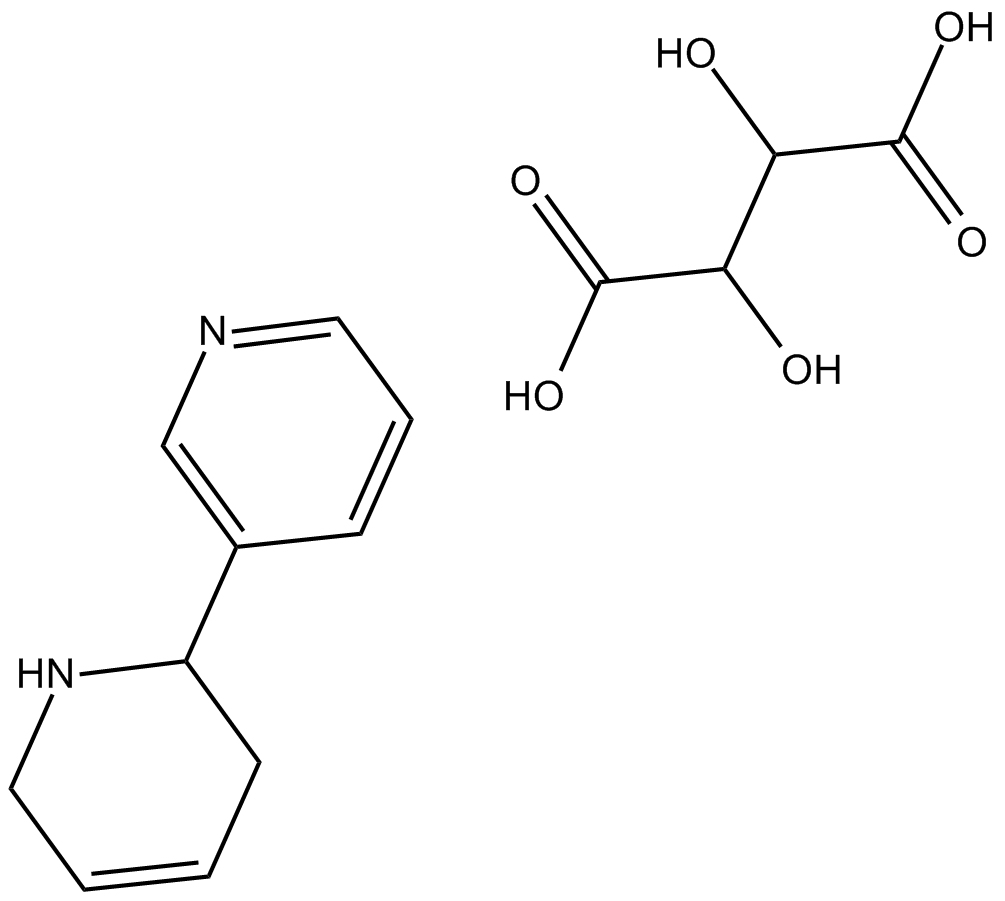
-
GC30952
4-(6-Bromo-2-benzothiazolyl)-N-methylbenzenamine
4-(6-Bromo-2-benzothiazolyl)-N-methylbenzenamine is a potent amyloid imaging agent which binds to Amyloid-β (1-40) with a KD of 1.7 nM.
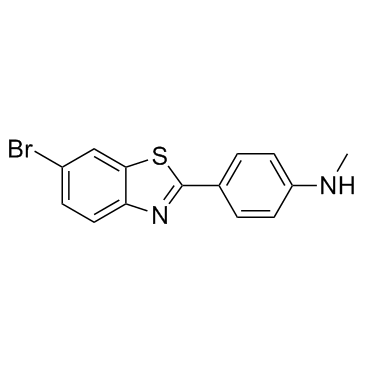
-
GC31208
4-(6-Bromo-2-benzothiazolyl)benzenamine
4-(6-Bromo-2-benzothiazolyl)benzenamine is a β-amyloid PET (positron emission tomography) tracer that can be used in the diagnosis of neurological diseases, such as Alzheimer's and Down's syndrome.
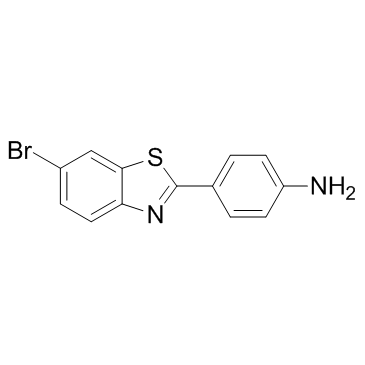
-
GC63502
Aβ/tau aggregation-IN-1
Aβ/tau aggregation-IN-1 is a potent Aβ1-42 β-sheets formation and tau aggregation inhibitor.
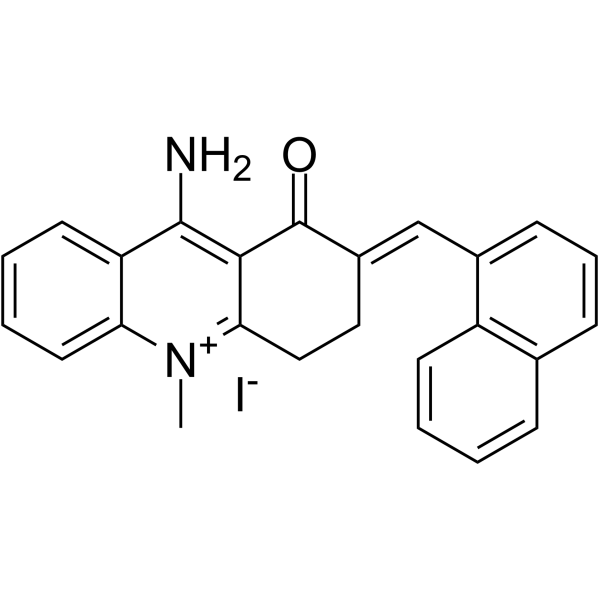
-
GC66406
Aducanumab
Aducanumab (BIIB037), a human monoclonal antibody selective for aggregated forms of amyloid beta (Aβ). Aducanumab shows brain penetration, and can be used for Alzheimer's disease (AD) research.

-
GC31259
Aftin-4
An inducer of Aβ42
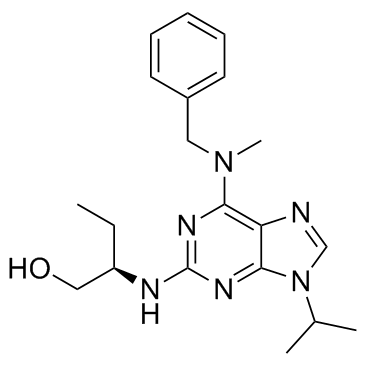
-
GC65281
Aleplasinin
Aleplasinin is an orally active, potent, BBB-penetrated and selectiveSERPINE1 (PAI-1, Plasminogen activator inhibitor-1) inhibitor.
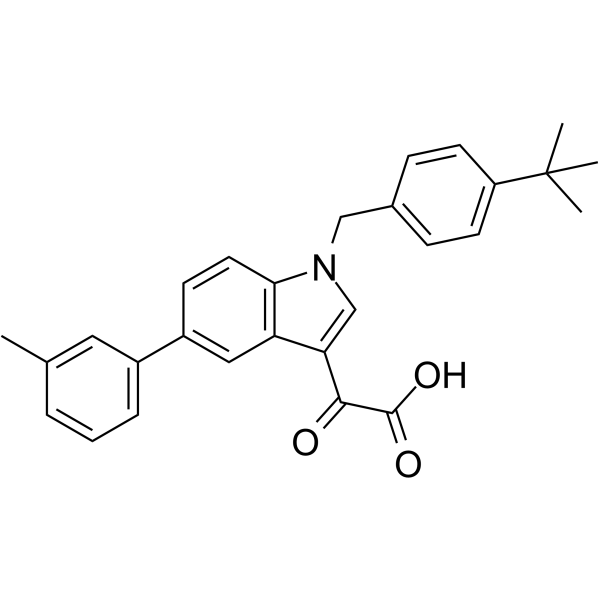
-
GC62834
ALZ-801
ALZ-801 is a potent and orally available small-molecule β-amyloid (Aβ) anti-oligomer and aggregation inhibitor, valine-conjugated prodrug of Tramiprosate with substantially improved PK properties and gastrointestinal tolerability compared with the parent compound.
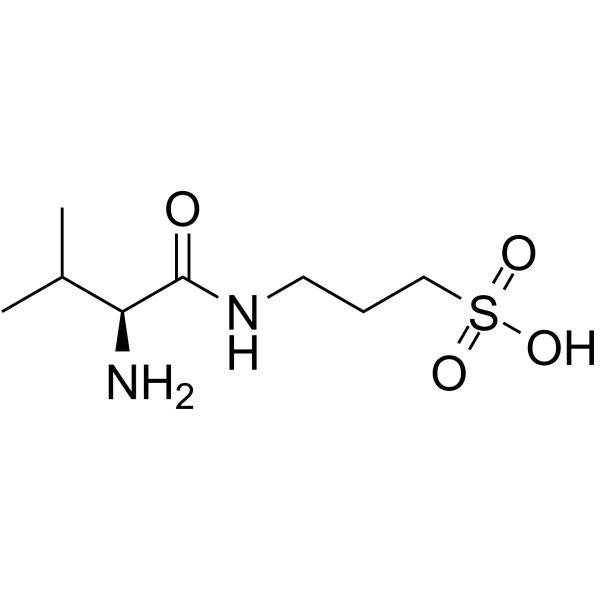
-
GC35334
Amyloid β Peptide (42-1)(human)
Amyloid β Peptide (42-1)(human) is the inactive form of Amyloid β Peptide (1-42).
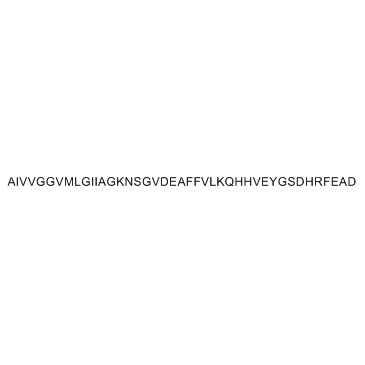
-
GA20733
Amyloid β-Protein (1-42)
Compared to the inner salt, the HCl salt of Aβ42 aggregates more readily at pH 7.4.
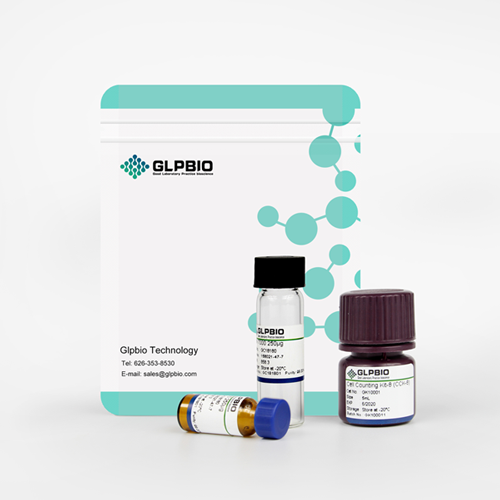
-
GA20730
Amyloid β-Protein (1-42) (HFIP-treated)
H-7442 was obtained by dissolving Amyloid β-Protein (1-42) (H-1368) in HFIP, aliquoting, and removing the solvent as described in the literature.

-
GA20736
Amyloid β-Protein (1-43)
Amyloid β-Protein (1-43) is more prone to aggregation and has higher toxic properties than the long-known Aβ1-42.

-
GP10099
amyloid A protein fragment [Homo sapiens]
Apolipoproteins related to HDL in plasma
![amyloid A protein fragment [Homo sapiens] Chemical Structure amyloid A protein fragment [Homo sapiens] Chemical Structure](/media/struct/GP1/GP10099.png)
-
GP10118
Amyloid Beta-Peptide (1-40) (human)
Amyloid β-Peptide (1-40) (human), (C194H295N53O58S1), a peptide with the sequence H2N-DAEFRHDSGYEVHHQKLVFFAEDVGSNKGAIIGLMVGGVVIA-OH, MW= 4329.8. Amyloid beta (Aβ or Abeta) is a peptide of 36–43 amino acids that is processed from the Amyloid precursor protein.
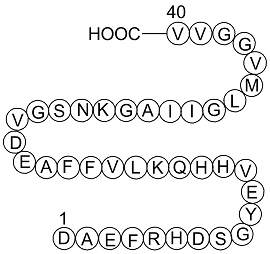
-
GP10049
Amyloid Beta-Peptide (12-28) (human)
Amyloid Beta-Peptide (12-28) (human) is a peptide fragment of amyloid beta protein (1-42) (Aβ (1-42)).
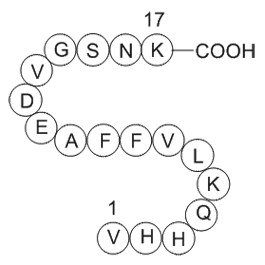
-
GP10082
Amyloid Beta-peptide (25-35) (human)
Amyloid beta-peptide (25-35) (human) is an fragment of Alzheimer's Amyloid beta peptide which has neurotoxic effects.
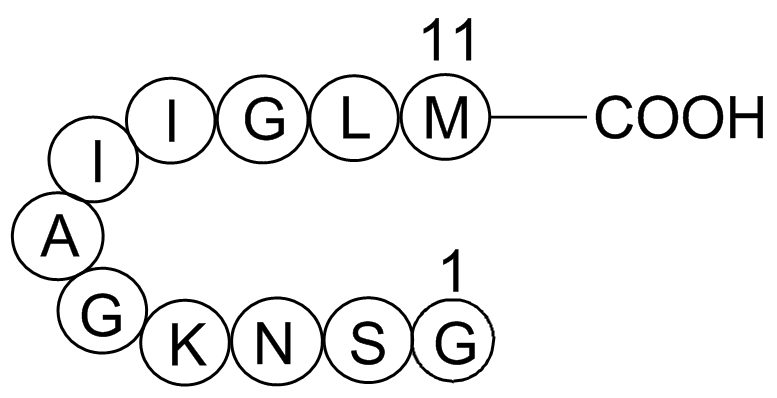
-
GC33160
amyloid P-IN-1
amyloid P-IN-1 is used in the research of diseases or disorders wherein depletion of serum amyloid P component (SAP), including amyloidosis, Alzheimer's disease, type 2 diabetes mellitus and osteoarthritis.
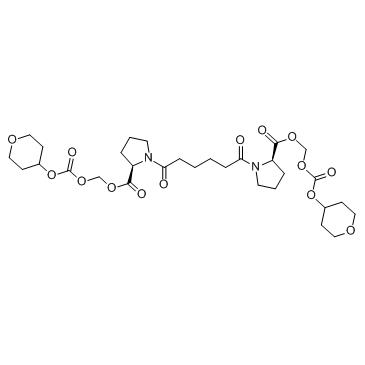
-
GP10046
Amyloid Precursor C-Terminal Peptide
For beta amyloid generation
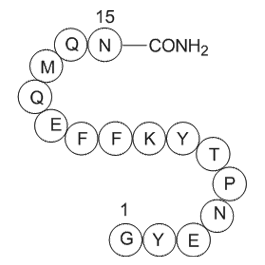
-
GP10057
Amyloid β-Peptide (10-20) (human)
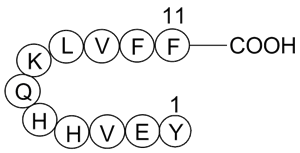
-
GP10094
Amyloid β-peptide (10-35), amide
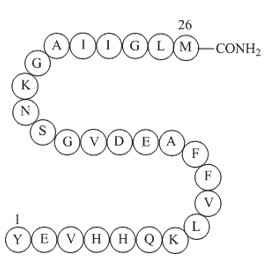
-
GP10097
Amyloid β-Protein (1-15)
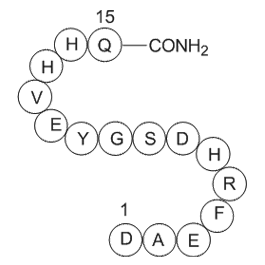
-
GC39254
Anatabine dicitrate
Anatabine dicitrate is a tobacco alkaloid that can cross the blood-brain barrier.
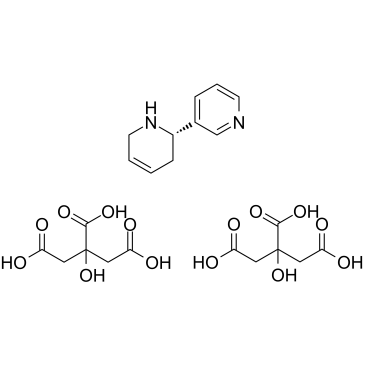
-
GC11309
ARN2966
APP expression modulator
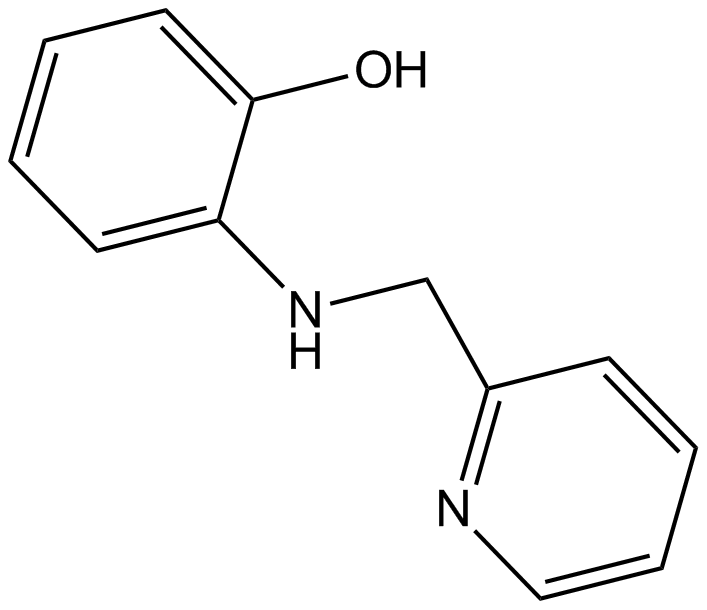
-
GC19053
Azeliragon
TTP488 is an antagonist at the Receptor for Advanced Glycation End products, is evaluated as a potential treatment for patients with mild-to-moderate Alzheimer's disease (AD).
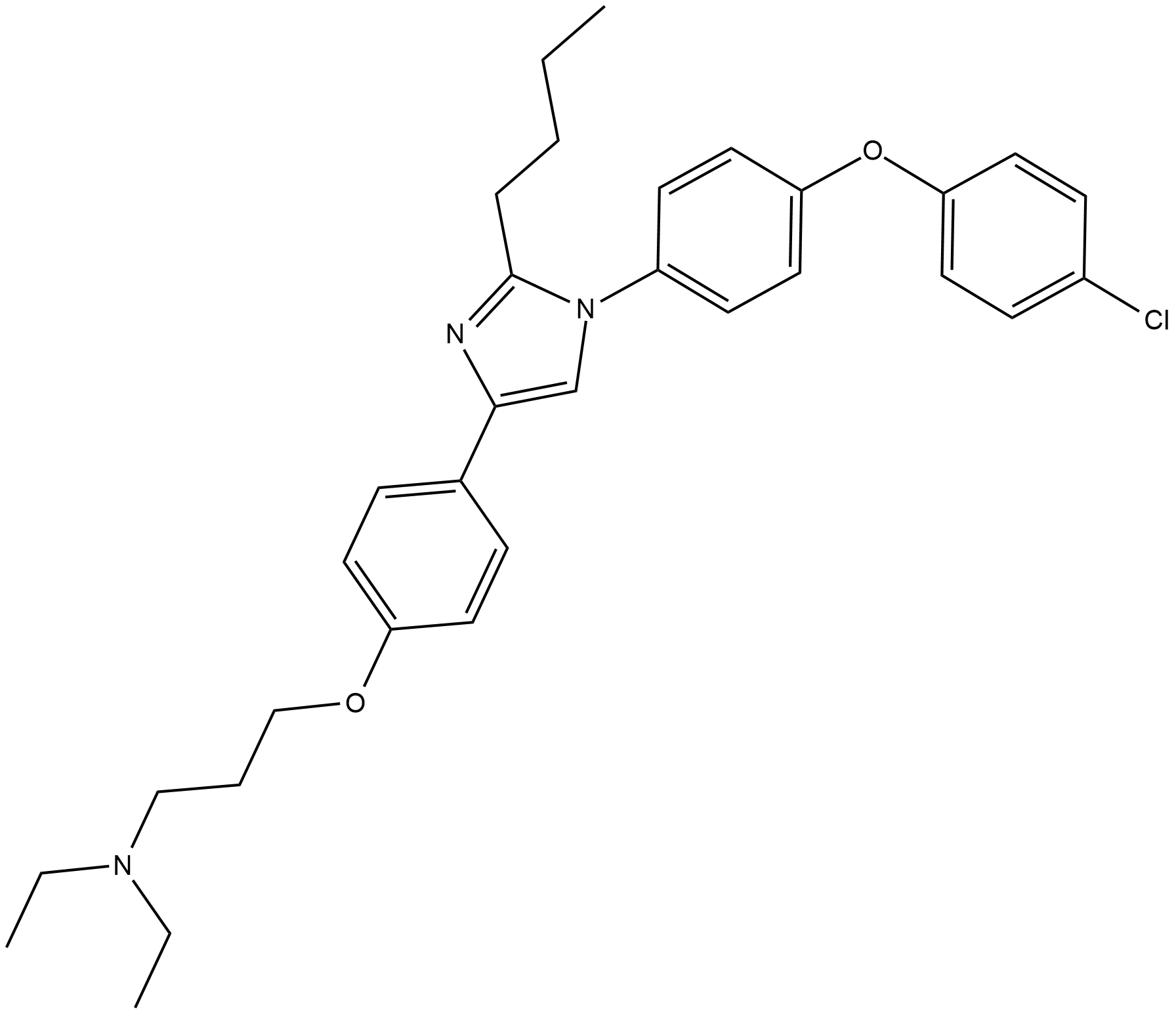
-
GP10083
Beta-Amyloid (1-11)
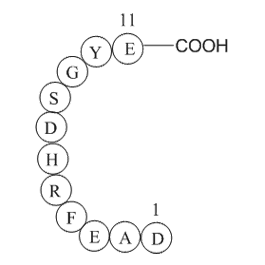
-
GC34232
Beta-Amyloid(1-14),mouse,rat

-
GC31124
BF 227
BF 227 is a candidate for an amyloid imaging probe for PET, with a Ki of 4.3 nM for Aβ1-42 fibrils.
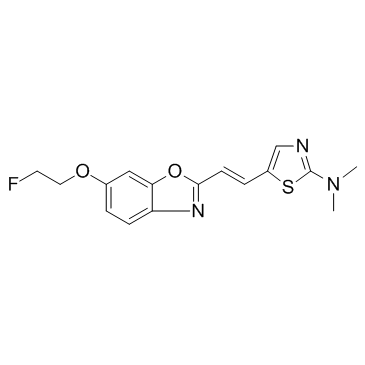
-
GC33750
BF-168
BF-168, a candidate probe for PET, is found to specifically recognize both neuritic and diffuse plaques, with a Ki of 6.4 nM for Aβ1-42.
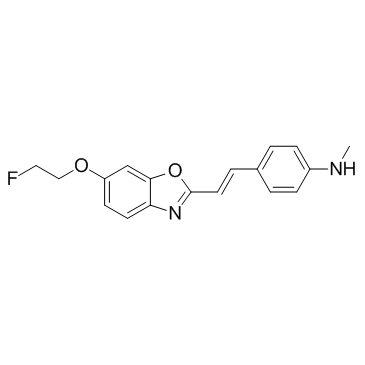
-
GC15950
CGP 52411
EGFR inhibitor
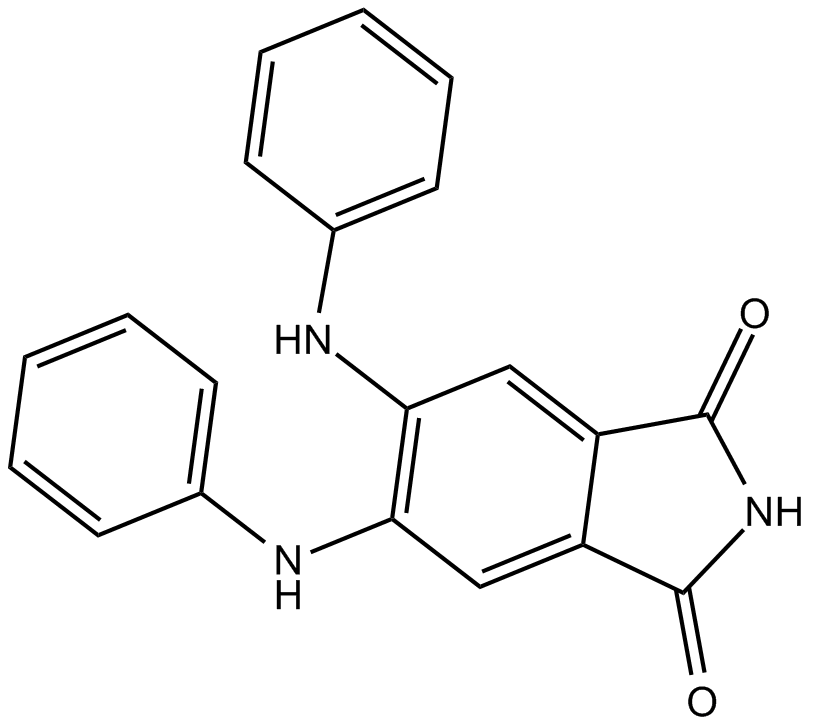
-
GC61887
Cl-NQTrp
Cl-NQTrp signifcantly disrupts the preformed fbrillar aggregates of Tau-derived PHF6 (VQIVYK) peptide and full-length tau protein.
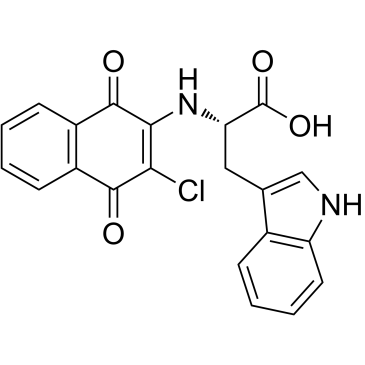
-
GC14854
Colivelin
Colivelin (CLN) is A brain-permeable neuroprotective peptide.
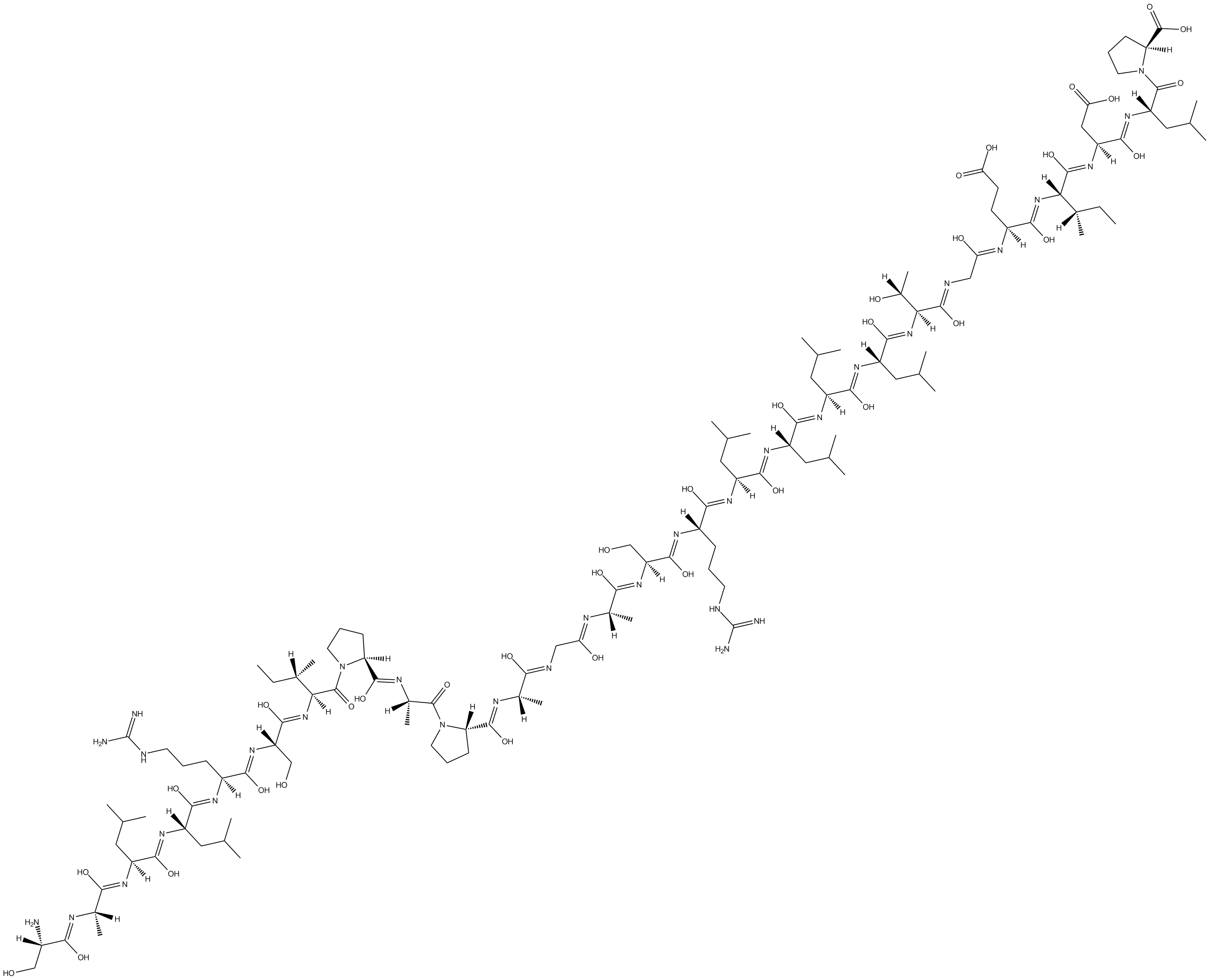
-
GC35720
Colivelin TFA
Colivelin TFA is a brain penetrant neuroprotective peptide and a potent activator of STAT3, suppresses neuronal death by activating STAT3?in vitro.

-
GC14828
CPHPC
CPHPC is a ligand for serum amyloid P component (SAP) and intends to inhibit and dissociate SAP binding to amyloid fibrils and tangles.
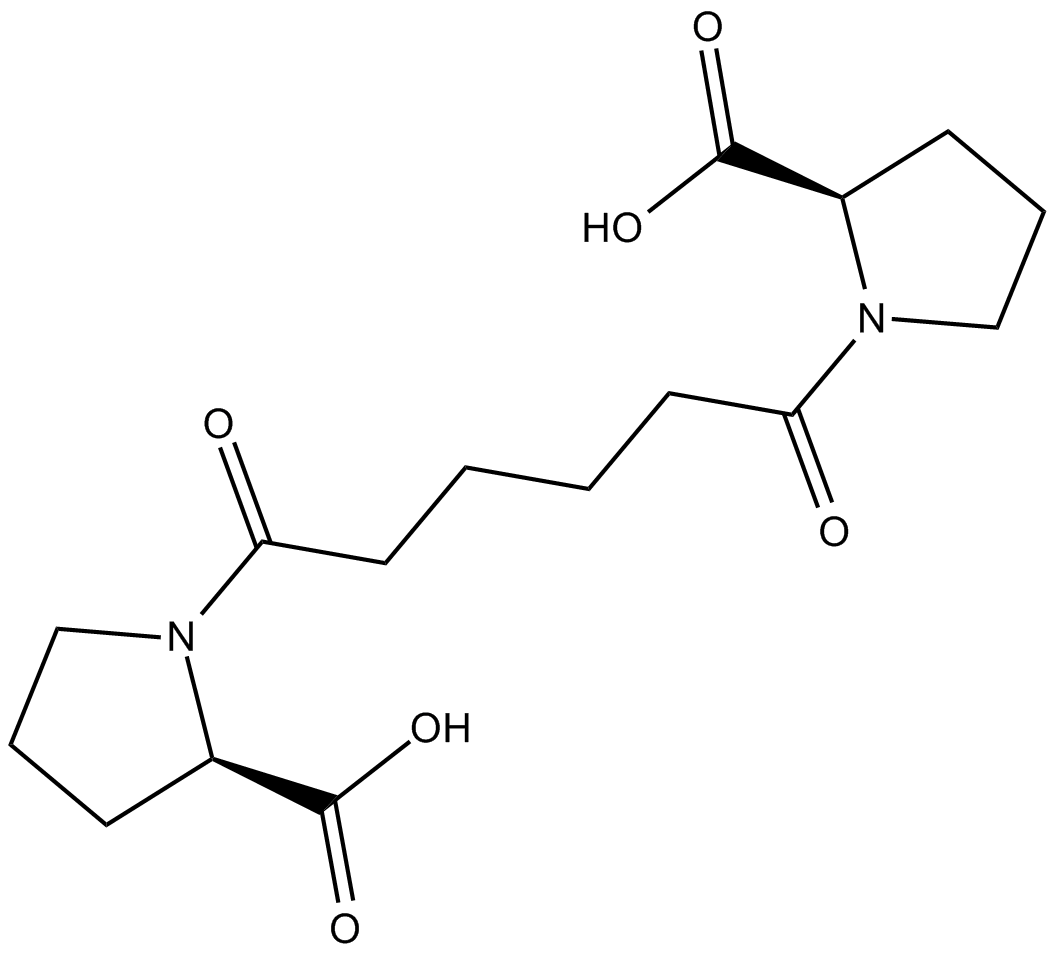
-
GC10230
CRANAD 2
near-infrared probe that binds to Aβ40 aggregates

-
GC12942
DAPT (GSI-IX)
Inhibitor of γ-secretase
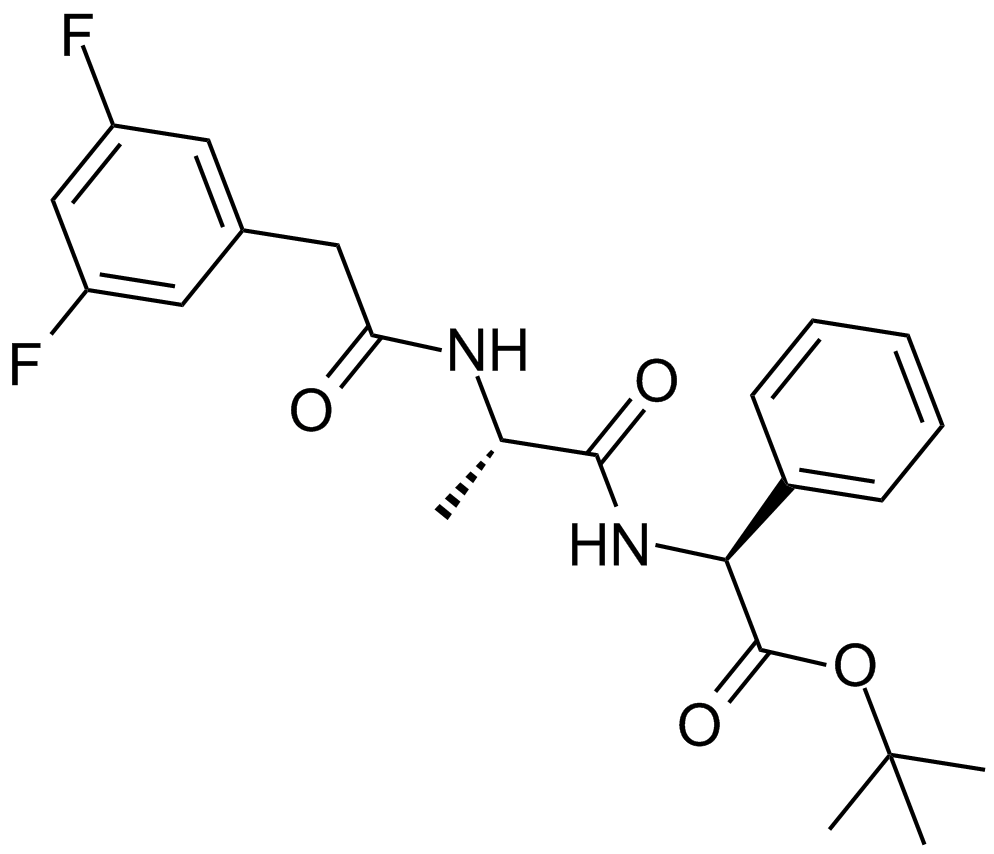
-
GC50733
Davunetide
Davunetide is an eight amino acid snippet derived from activity-dependent neuroprotective protein (ADNP), a neurotrophic factor that exists in the mammalian CNS.

-
GC13554
Deferoxamine mesylate
Deferoxamine mesylate is a drug that chelates iron by forming a stable complex that prevents the iron from entering into further chemical reactions, and is used for the treatment of chronic iron overload in patients with transfusion-dependent anemias.
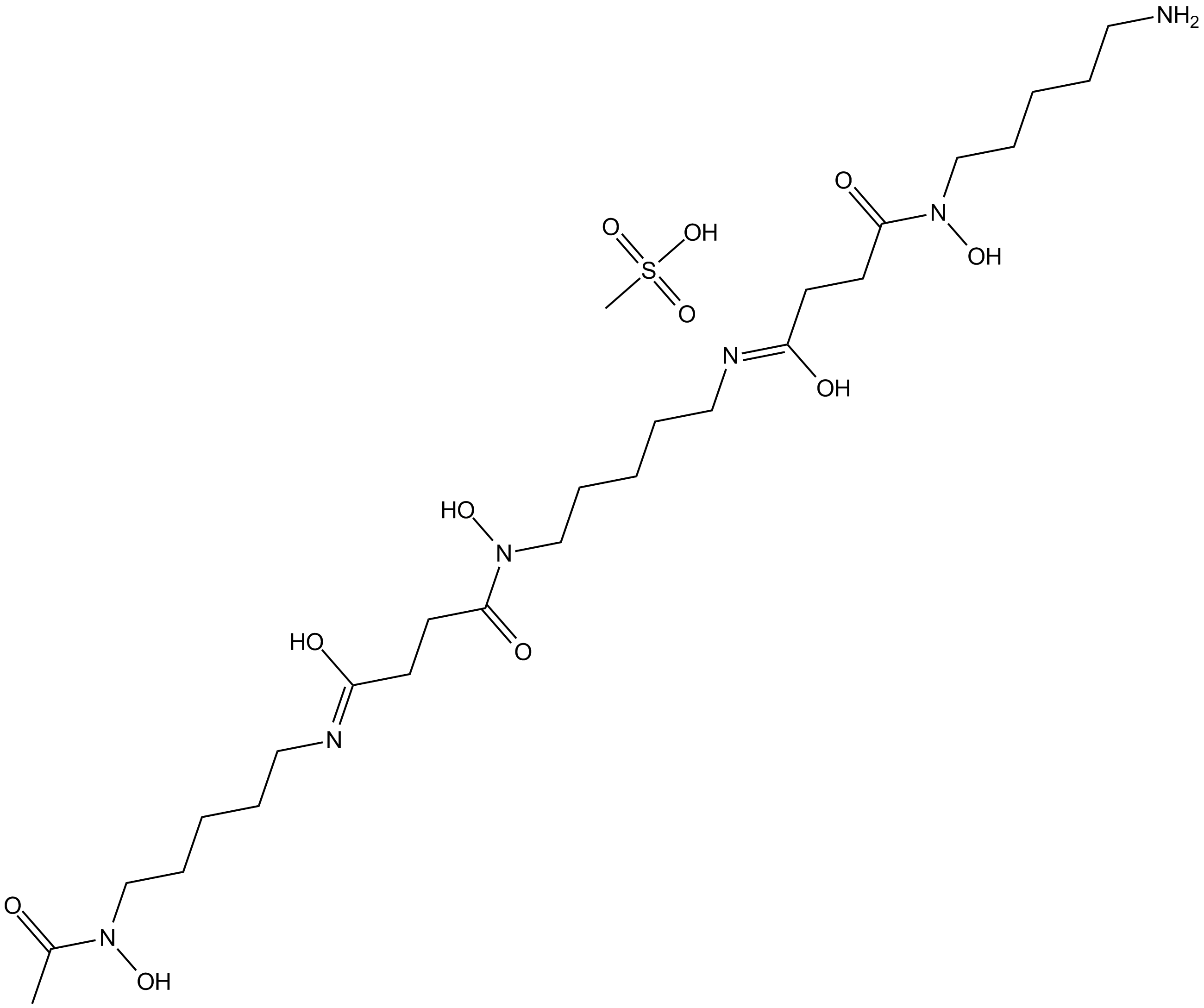
-
GC13256
Dihydroergocristine mesylate
5-HT receptor antagonist and partial agonist of adrenergic and dopaminergic receptors
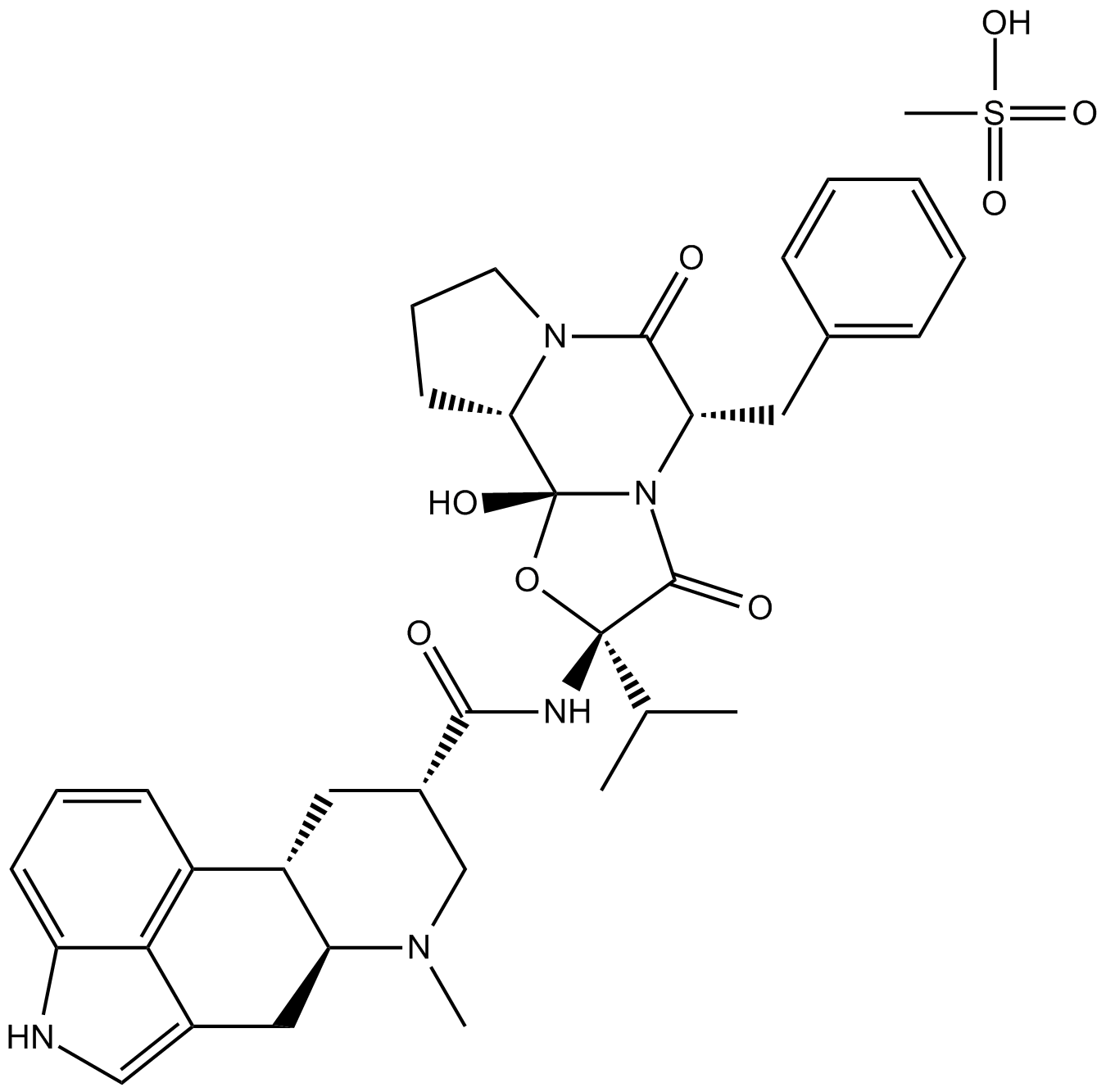
-
GC31083
DWK-1339 (MDR-1339)
DWK-1339 (MDR-1339) (DWK-1339) is an orally active and blood-brain-barrier-permeable Aβ-aggregation inhibitor, used in the research of Alzheimer's disease.

-
GC30823
Edonerpic maleate (T-817 maleate)
Edonerpic maleate (T-817 maleate) is a novel neurotrophic agent which can inhibit amyloid-β peptides (Aβ).
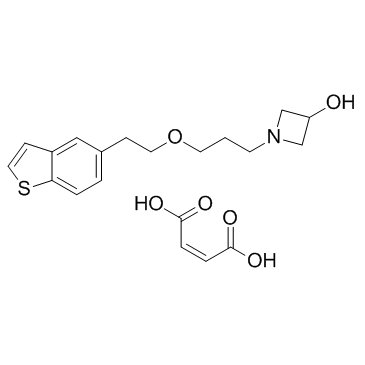
-
GC10660
EHT 1864
Rac family small GTPases inhibitor
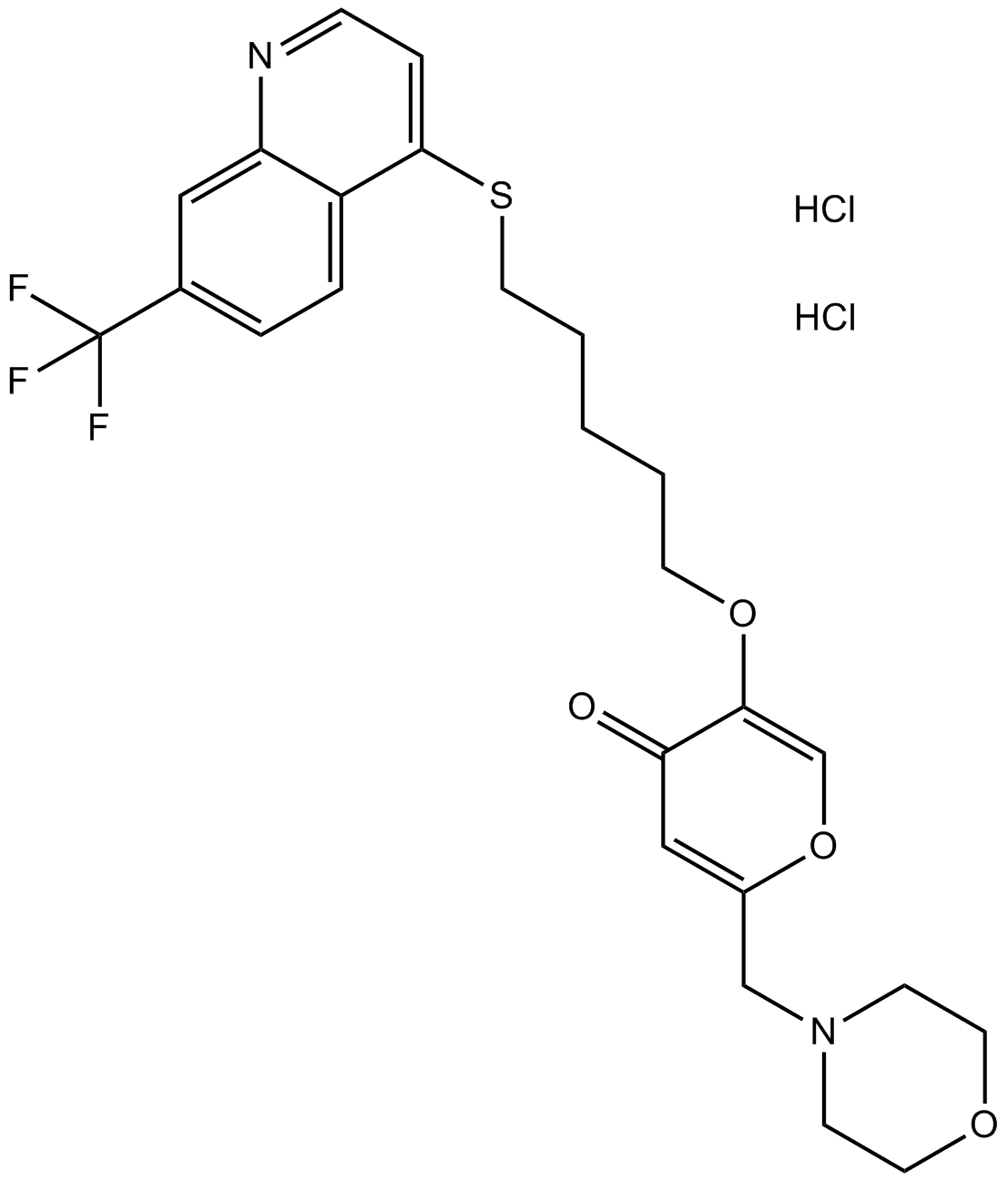
-
GC10089
EUK 134
Salen-manganese complexes;SOD mimetic
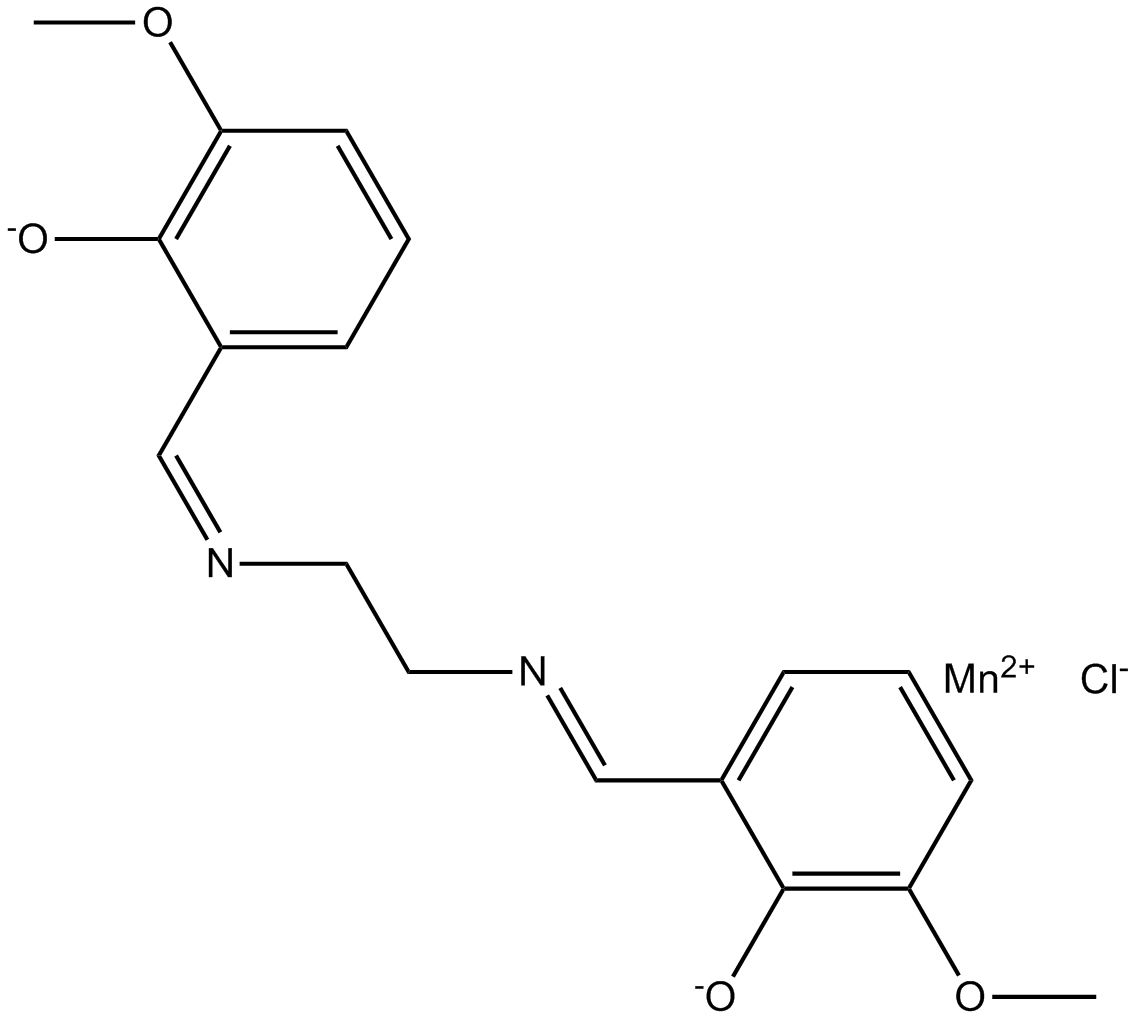
-
GC62966
Ezeprogind disulfate
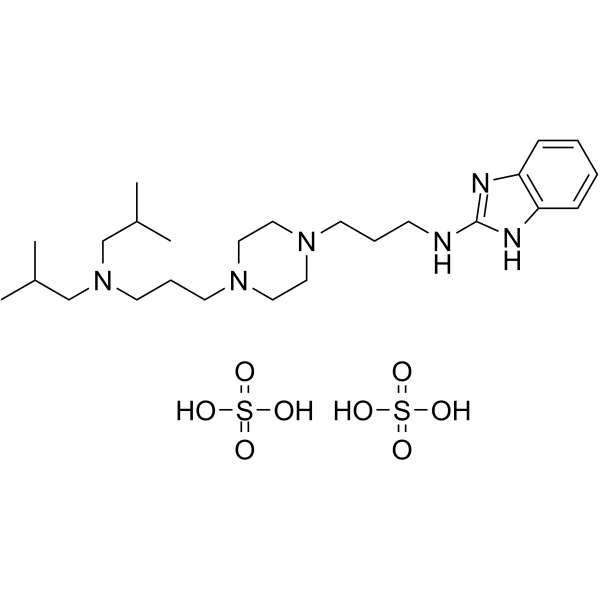
-
GC61476
Fmoc-Ala-Glu-Asn-Lys-NH2
Fmoc-Ala-Glu-Asn-Lys-NH2 is a selective asparagine endopeptidase (AEP) inhibitor peptide and suppresses amyloid precursor protein (APP) cleavage.
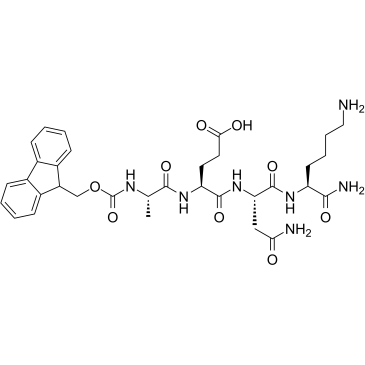
-
GC15105
FPS-ZM1
A RAGE Inhibitor
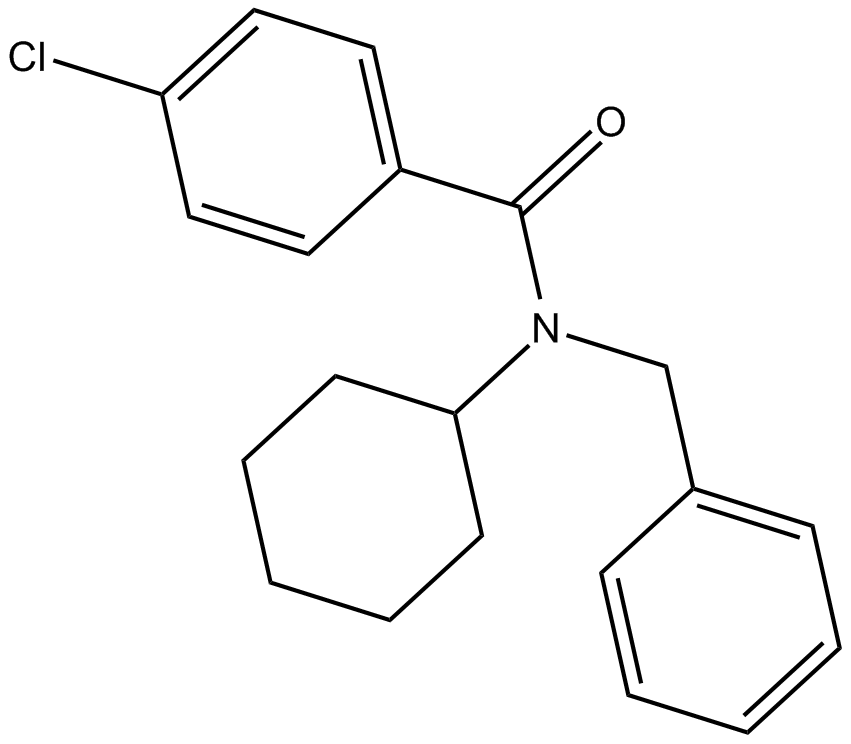
-
GC36076
Frentizole
Frentizole, an FDA-approved immunosuppressant, is a Aβ-ABAD (binding alcohol dehydrogenase) interaction inhibitor with an IC50 value of 200 μM.
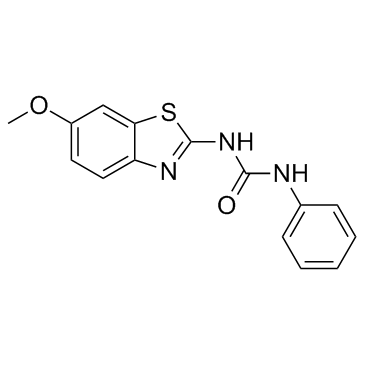
-
GC36110
gamma-Secretase Modulators
gamma-Secretase Modulators (Amyloid-β production inhibitor) is a Amyloid-β production inhibitor.
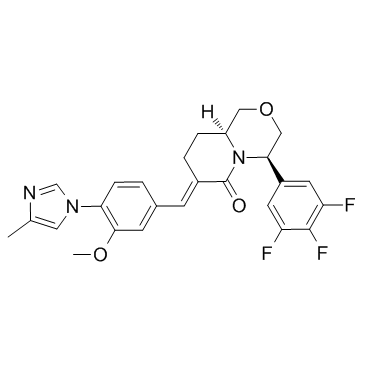
-
GN10428
Geniposide
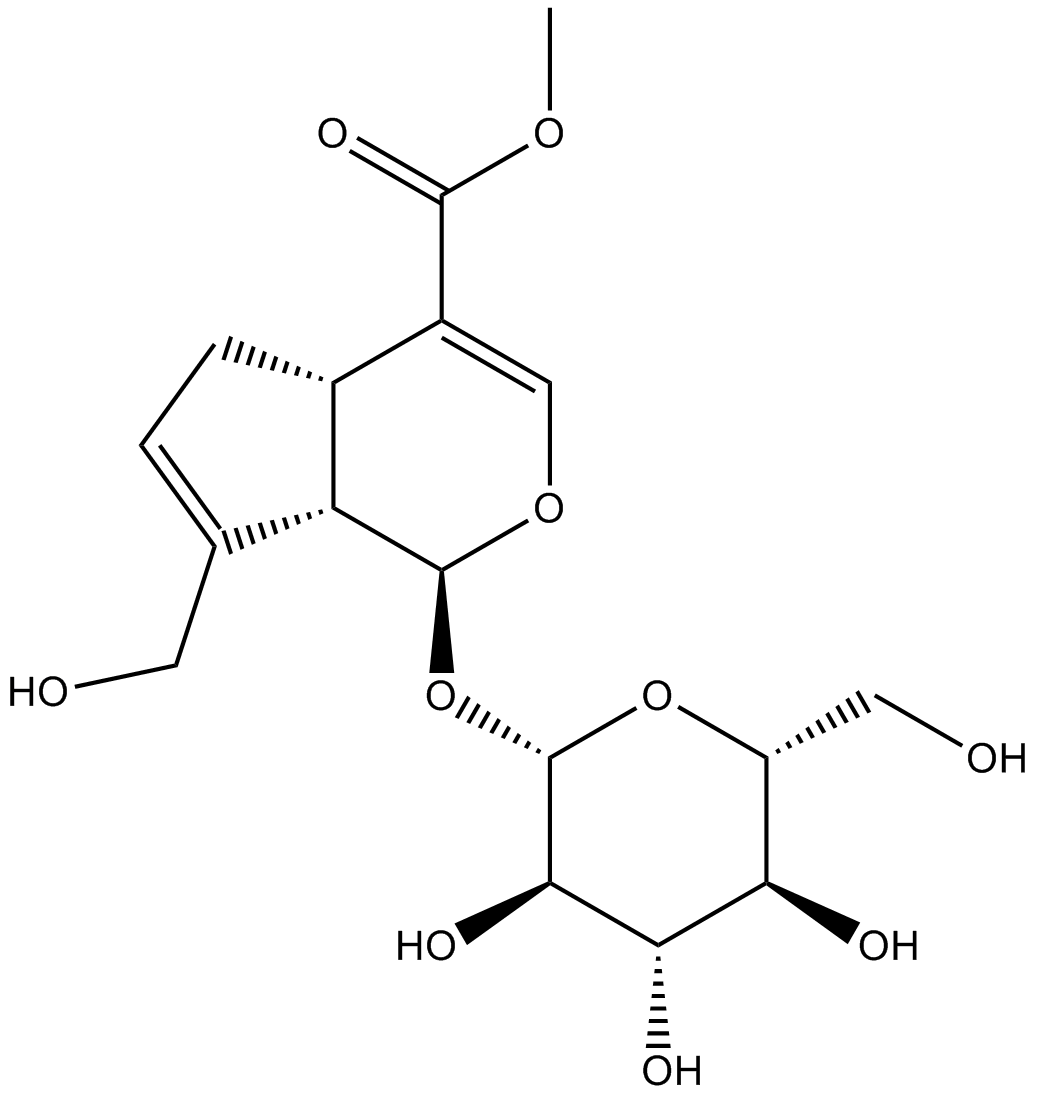
-
GN10307
Ginsenoside Re

-
GN10544
Ginsenoside Rg1
Ginsenoside Rg1 is one of the main active ingredients of ginseng and a steroidal glycoside with various biological activities. Ginsenoside Rg1 reduces brain Aβ levels and reduces NF-κB nuclear translocation.
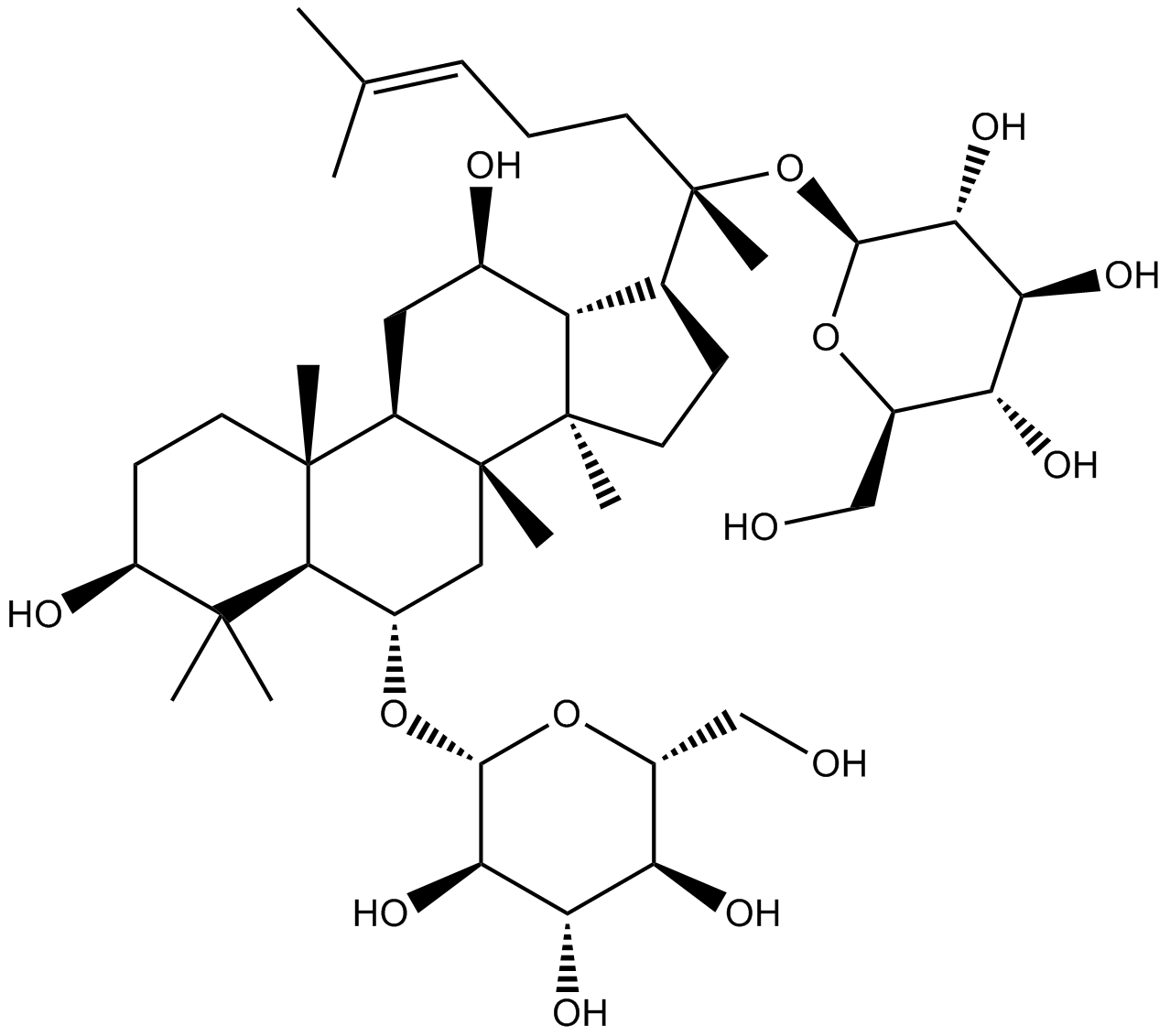
-
GN10614
Ginsenoside Rg2
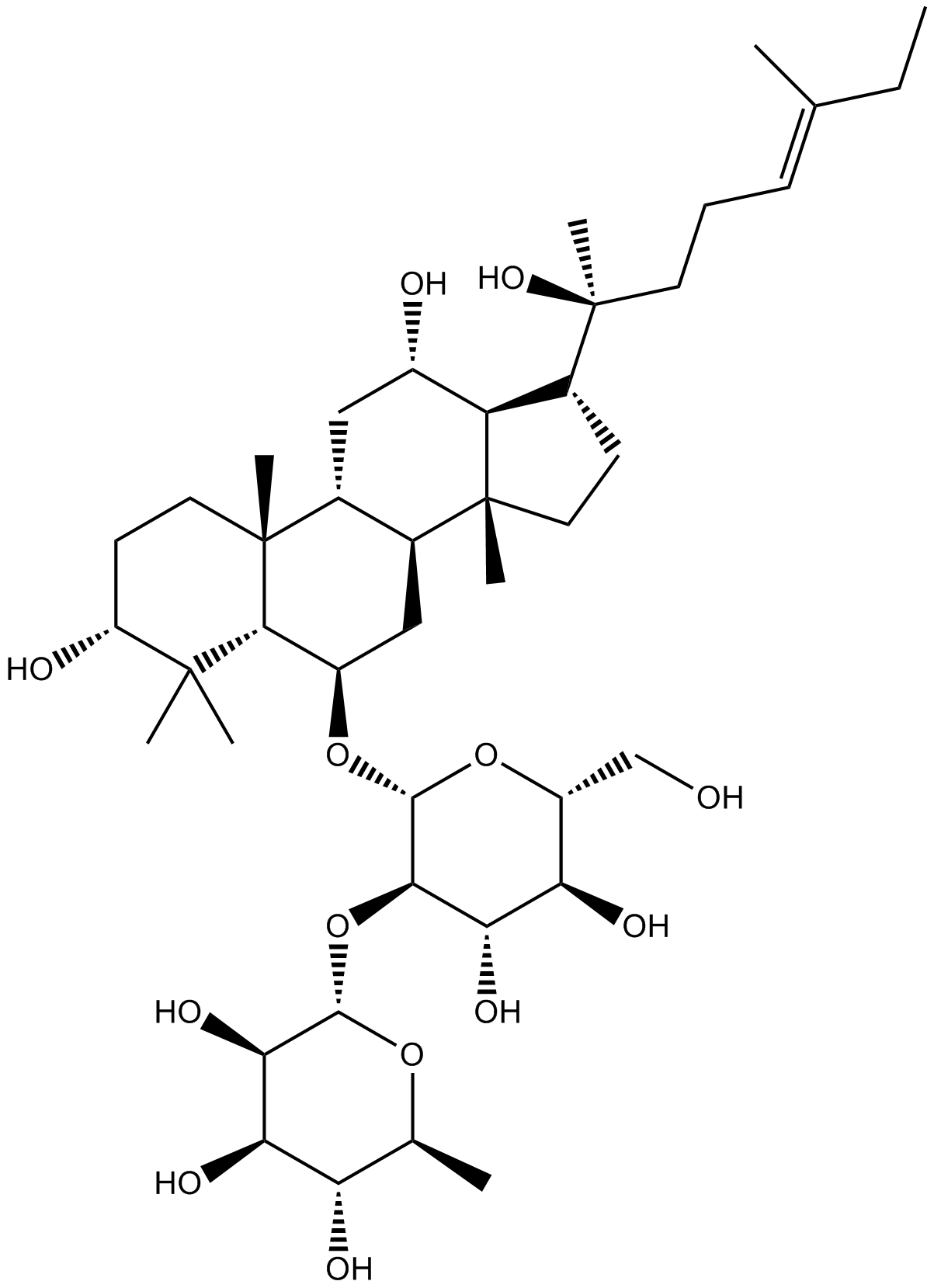
-
GN10799
Ginsenoside Rg3
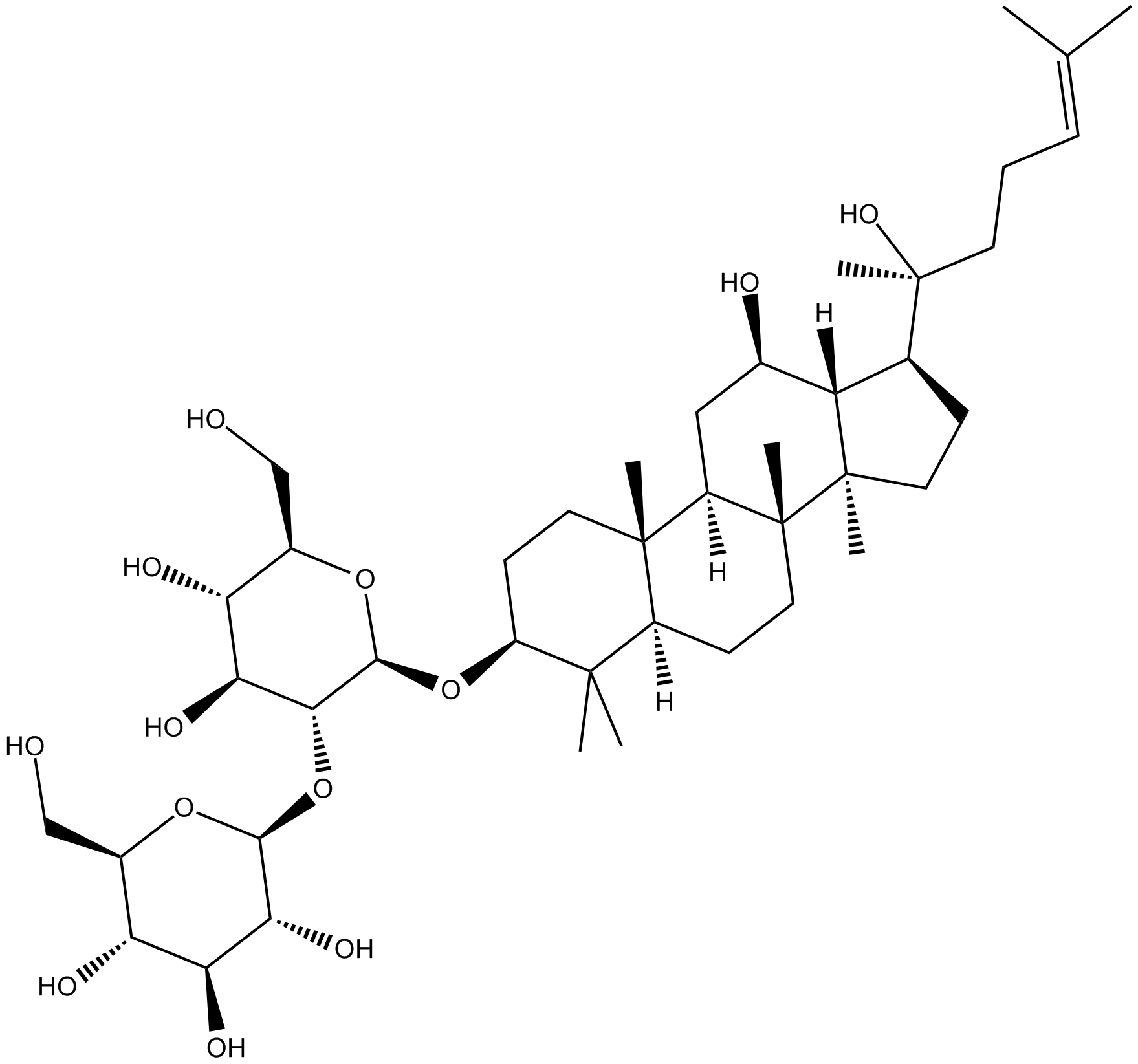
-
GC30892
Glutaminyl Cyclase Inhibitor 1
Glutaminyl Cyclase Inhibitor 1 is a glutaminyl cyclase inhibitor with an IC50 of 0.5 μM.
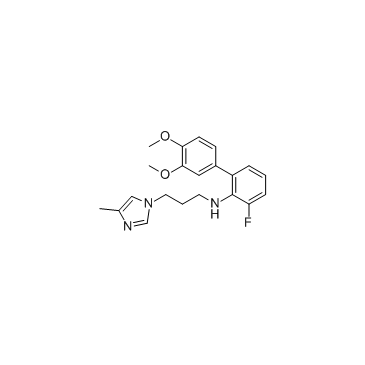
-
GC31110
Glutaminyl Cyclase Inhibitor 2
Glutaminyl Cyclase Inhibitor 2 is a glutaminyl cyclase inhibitor with an IC50 of 1.23 μM.
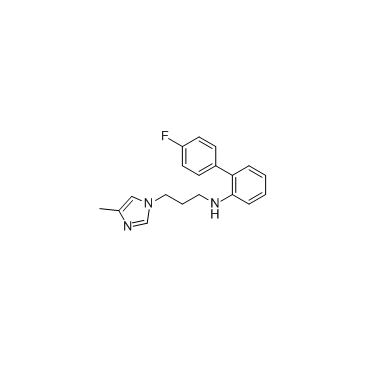
-
GC36156
Glutaminyl Cyclase Inhibitor 3
Glutaminyl Cyclase Inhibitor 3 (compound 212 ), a designed anti-Alzheimer’s compound, is a potent human Glutaminyl Cyclase (GC) inhibitor, with an IC50 of 4.5 nM.
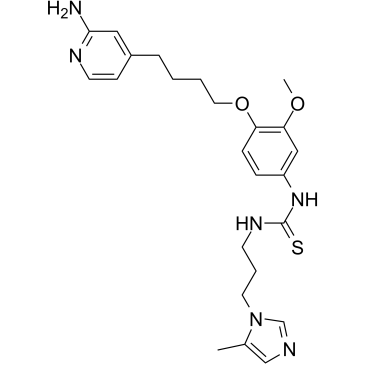
-
GC17657
Hoechst 34580
The nucleic acid stain Hoechst 34580 (Ex/Em: 392/440 nm) is frequently utilized as a cell-permeable nuclear counterstain that emits a blue fluorescence upon binding to dsDNA.

-
GC36247
Hoechst 34580 tetrahydrochloride
Hoechst 34580 tetrahydrochloride is a Hoechst series dye that is commonly used for nuclear labeling staining of living cells.
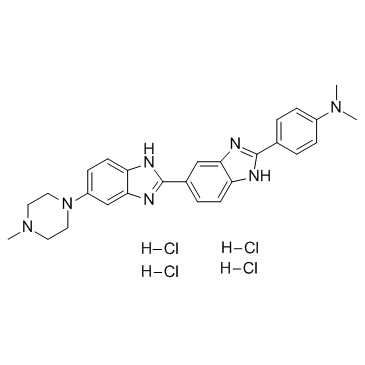
-
GC10988
J 147
reduces soluble Aβ40 and Aβ42 levels
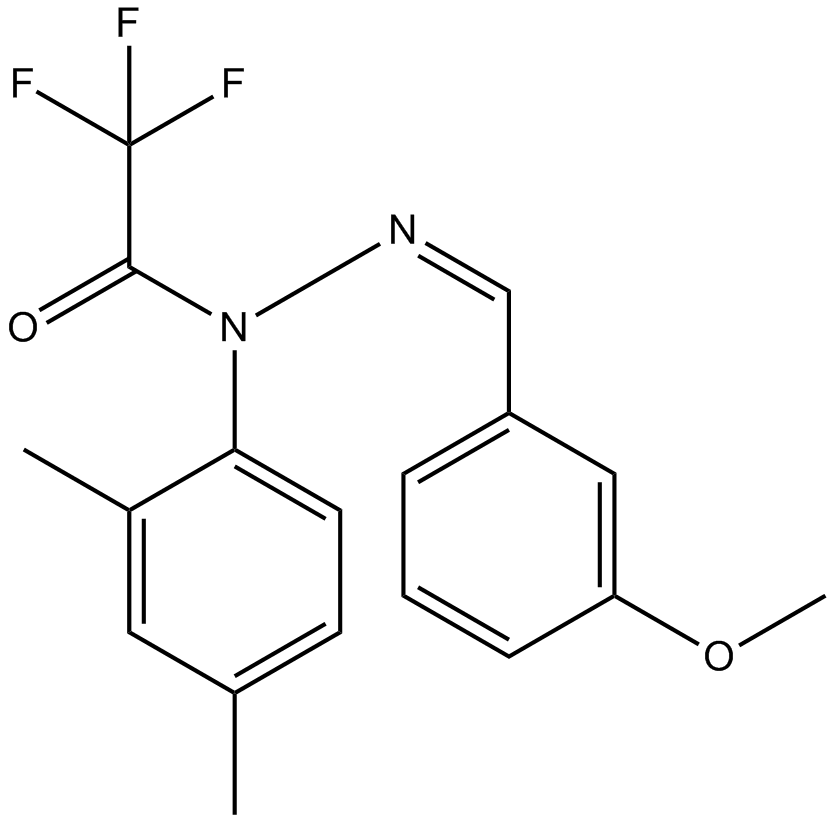
-
GC30920
K 01-162 (K162)
K 01-162 (K162) (K162) inhibits the fibril formation of Aβ peptides and eliminates their neurotoxicity.
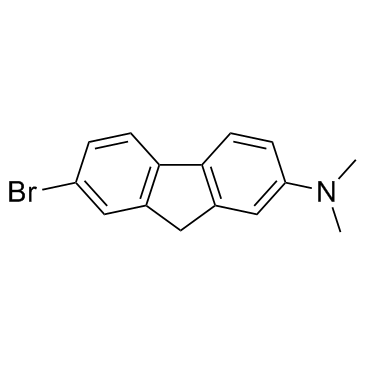
-
GC17974
Latrepirdine dihydrochloride
Latrepirdine is a neuroactive compound with antagonist activity at histaminergic, α-adrenergic, and serotonergic receptors.
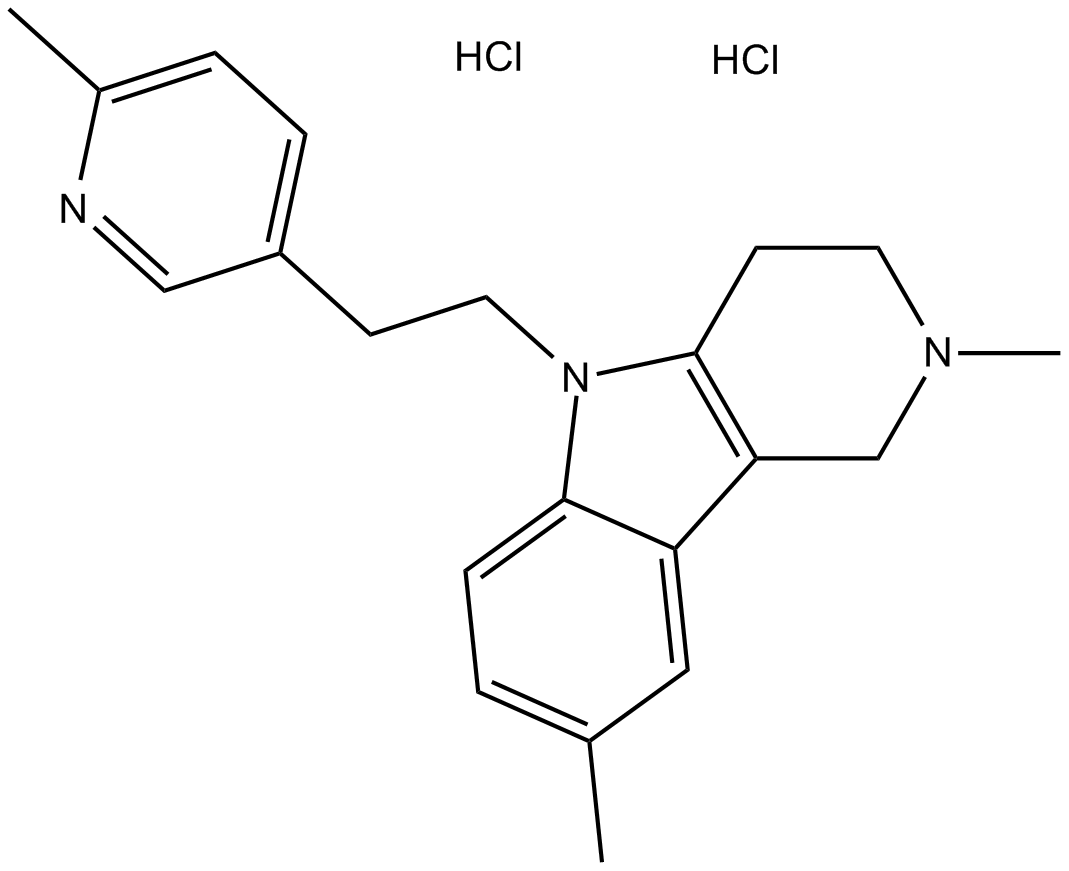
-
GC38628
Licochalcone B

-
GC12366
LPYFD-NH2
neuroprotective peptide that binds to amyloid beta (Aβ)

-
GC30884
LX2343
An inhibitor of BACE1 and PI3K
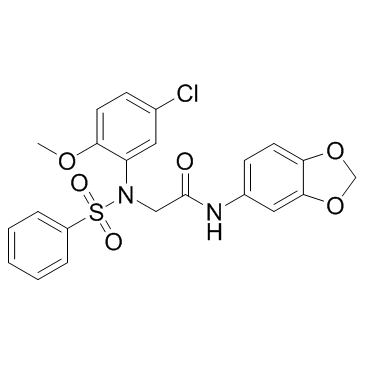
-
GC10894
Methoxy-X04
Methoxy-X04 is a brain-permeable fluorescent probe for amyloid-beta (aβ) designed to detect and quantify plaques, tangles, and cerebrovascular amyloid. It displays high in vitro binding affinity (Ki =26.8 nM) for fibrillar β-sheet deposition.
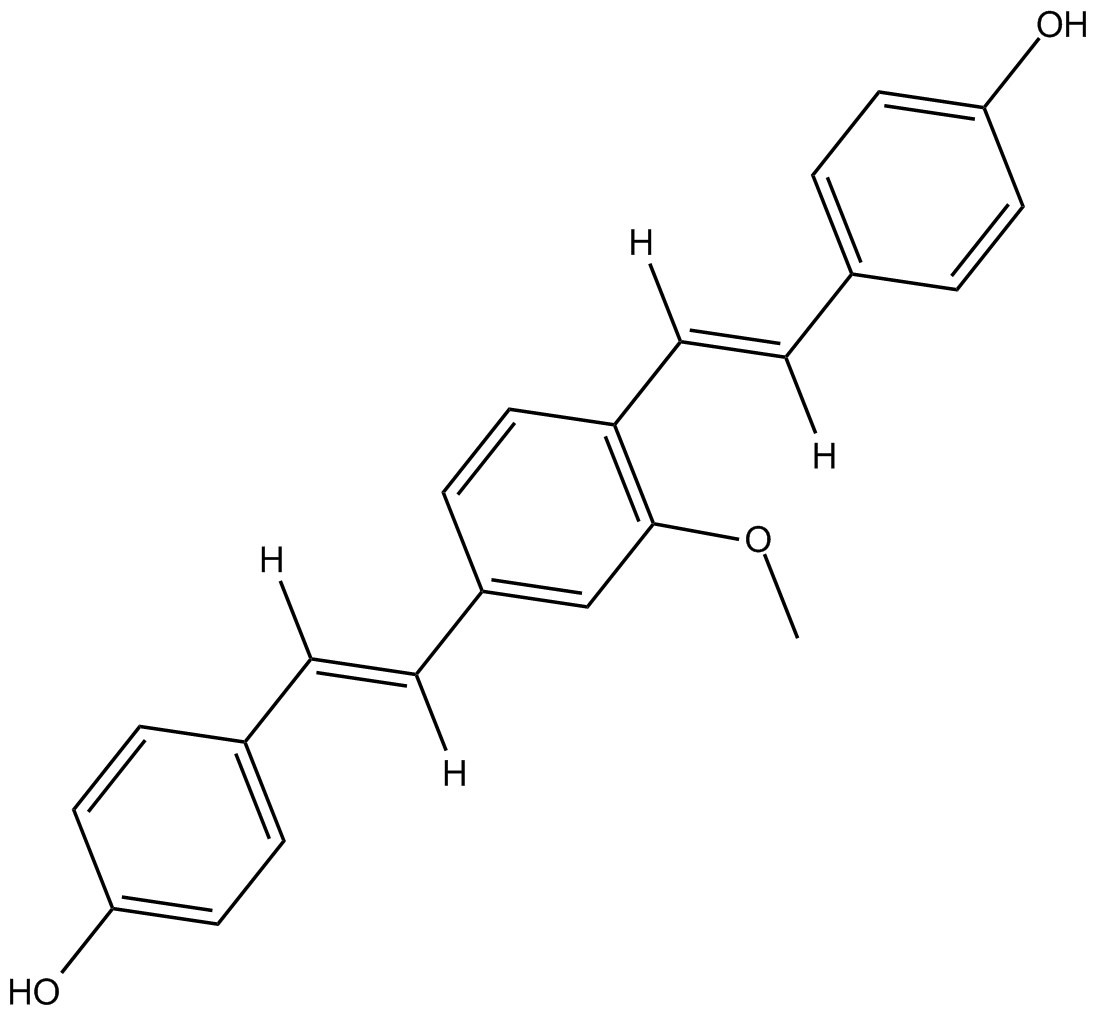
-
GC31285
MK-3328
MK-3328 is a β-Amyloid PET ligand, which exhibits high binding potency with an IC50 of 10.5 nM.
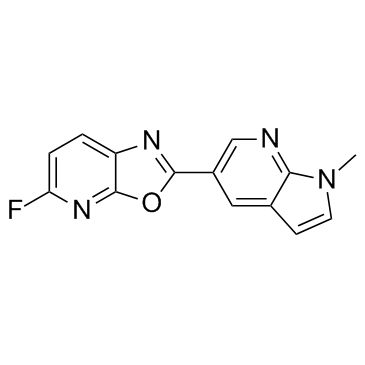
-
GN10695
Notoginsenoside R1
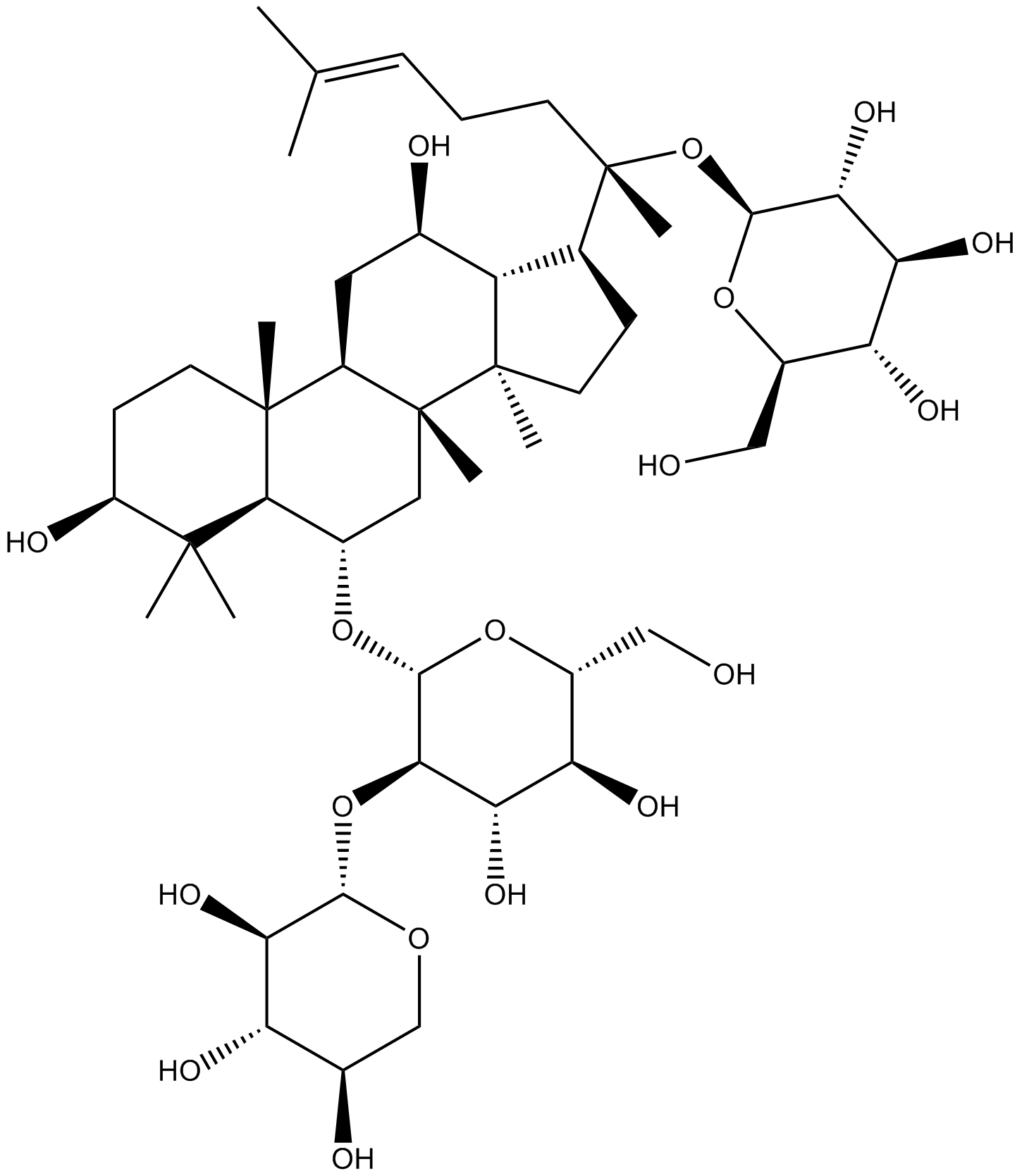
-
GC17037
NQTrp
inhibitor of Alzheimer’s disease-associated amyloid β (Aβ) oligomerization and fibrillization
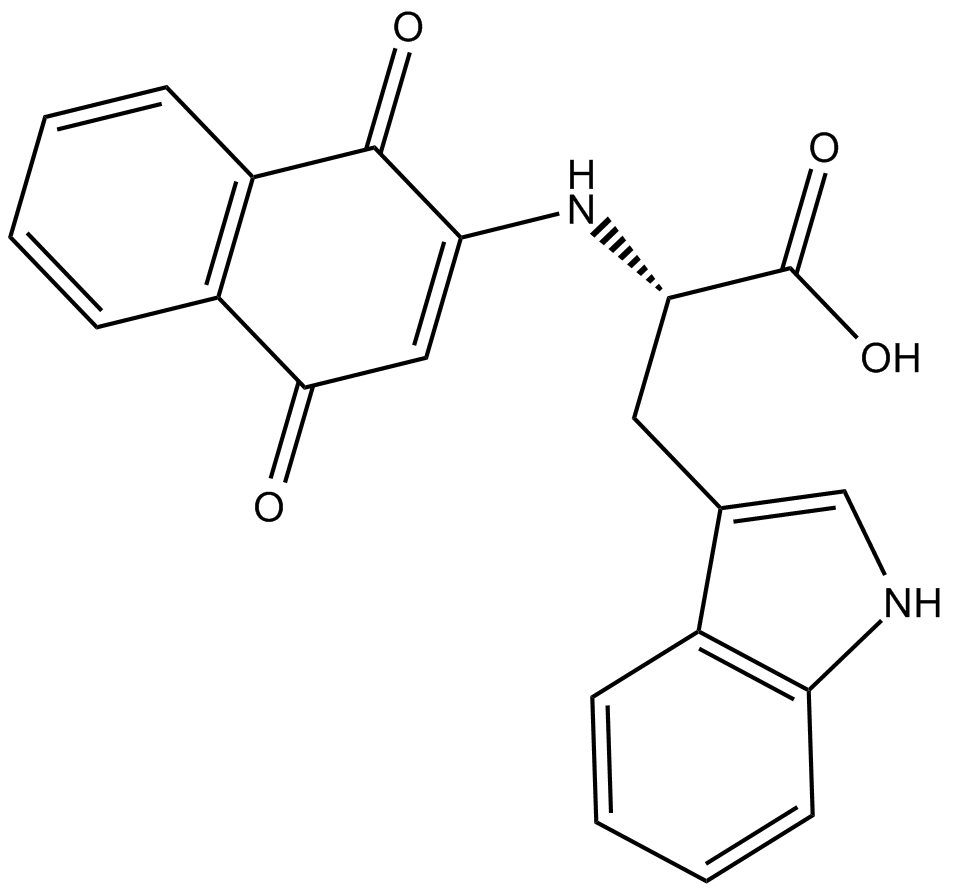
-
GC68377
OAB-14
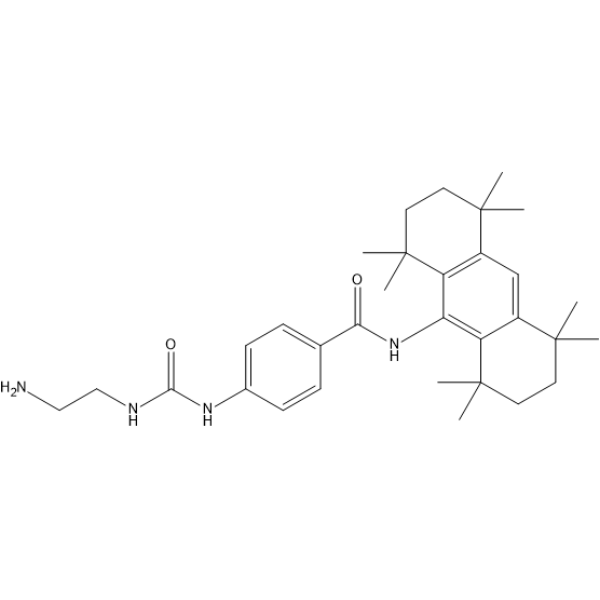
-
GC13783
Phenserine
acetylcholinesterase inhibitor
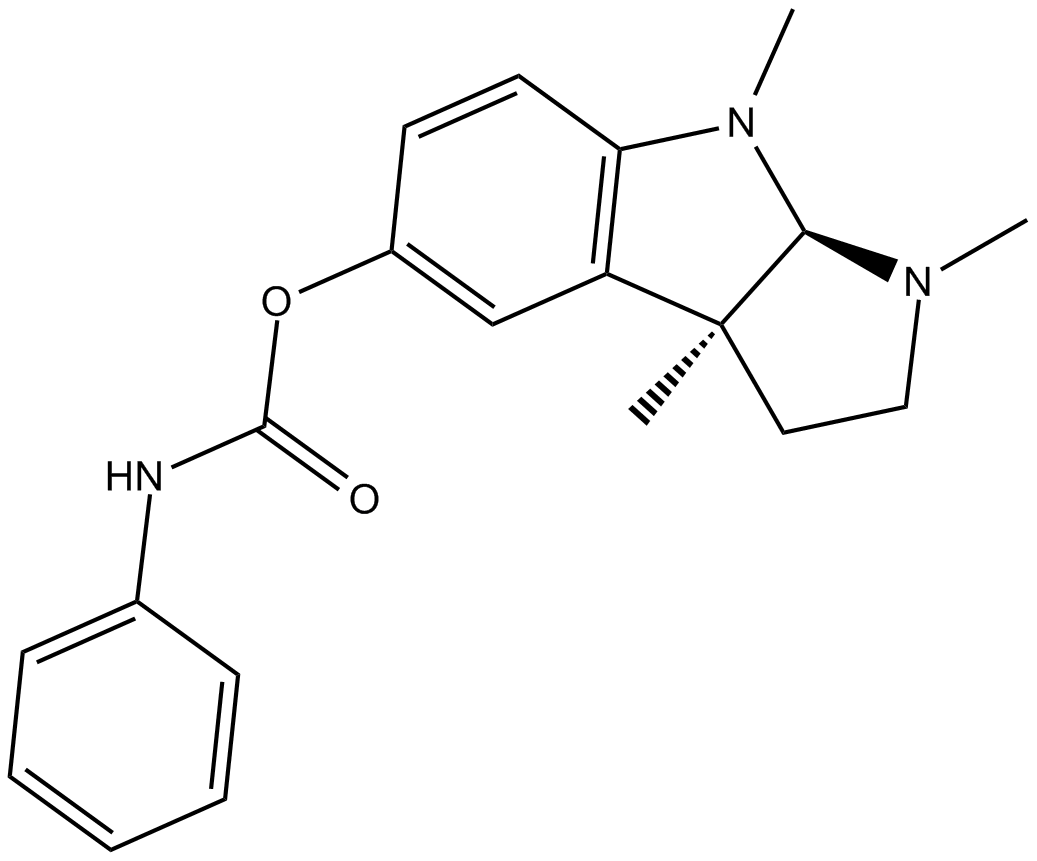
-
GC36954
PQM130
PQM130, a Feruloyl-Donepezil Hybrid compound with brain penatration, is a multitarget drug candidate against the neurotoxicity induced by Aβ1-42 oligomer (AβO) and shows anti-inflammatory activity.
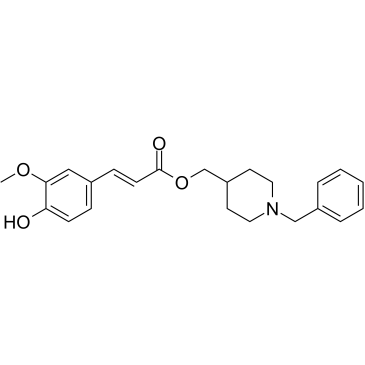
-
GC62702
RAGE antagonist peptide TFA
RAGE antagonist peptide TFA is an advanced glycation end products (RAGE) antagonist.
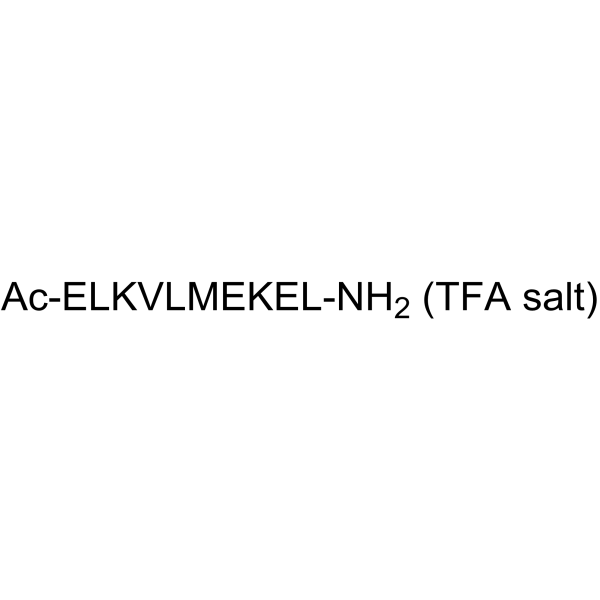
-
GC10425
Ro 90-7501
Inhibitor of amyloid β42 (Aβ42) fibril assembly

-
GC44856
Rutin (hydrate)
Rutin (Rutoside) trihydrate is a multifunctional natural flavonoid glycoside.

-
GN10502
Saikosaponin C
